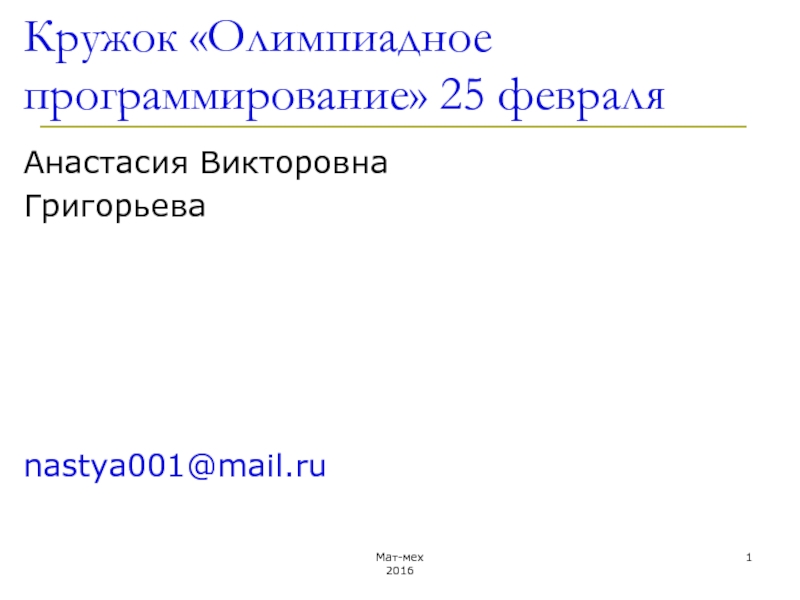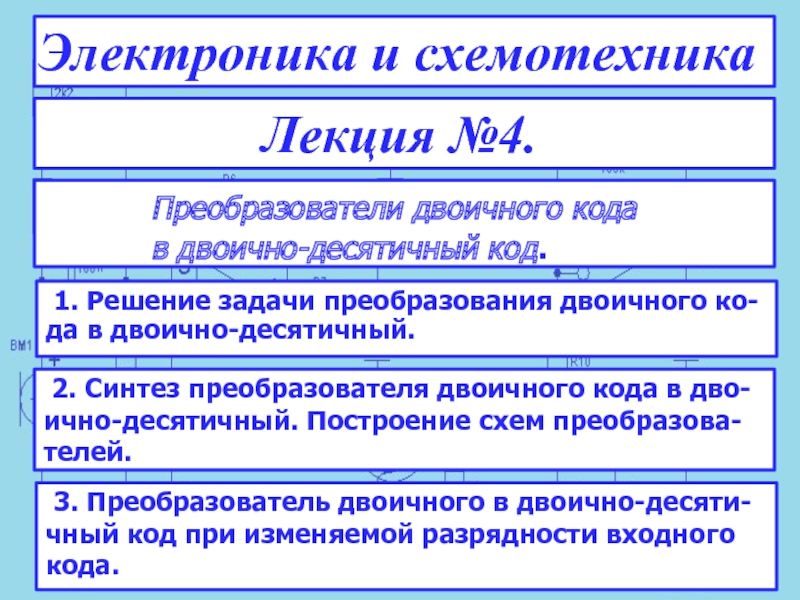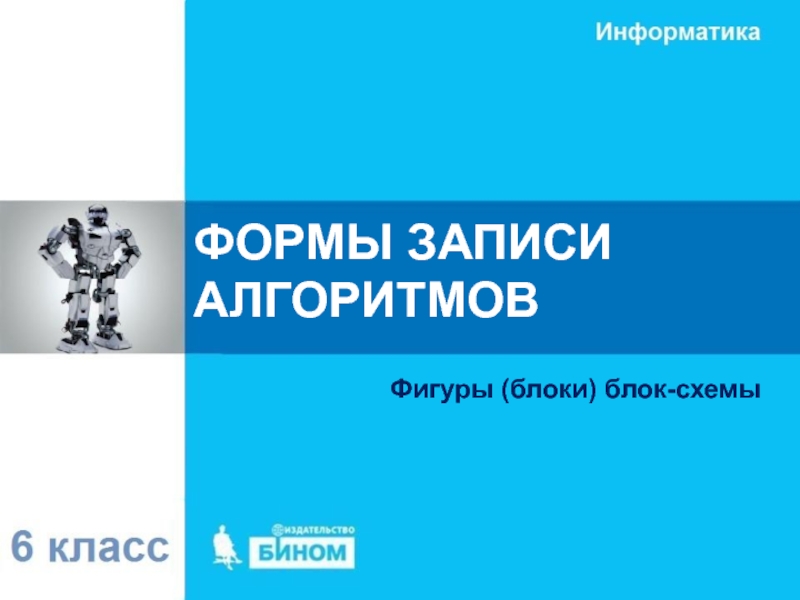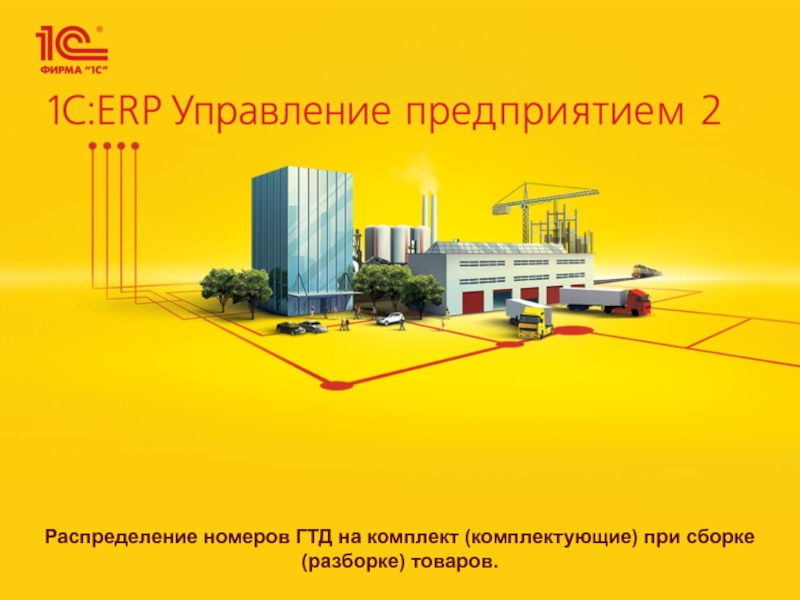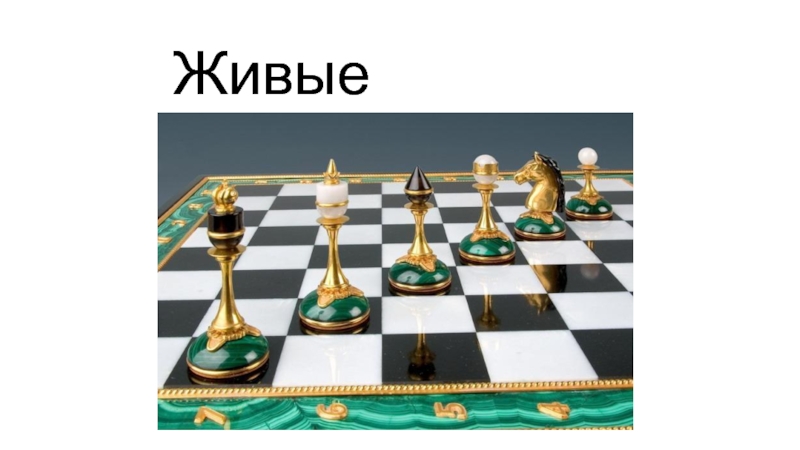- Главная
- Разное
- Дизайн
- Бизнес и предпринимательство
- Аналитика
- Образование
- Развлечения
- Красота и здоровье
- Финансы
- Государство
- Путешествия
- Спорт
- Недвижимость
- Армия
- Графика
- Культурология
- Еда и кулинария
- Лингвистика
- Английский язык
- Астрономия
- Алгебра
- Биология
- География
- Детские презентации
- Информатика
- История
- Литература
- Маркетинг
- Математика
- Медицина
- Менеджмент
- Музыка
- МХК
- Немецкий язык
- ОБЖ
- Обществознание
- Окружающий мир
- Педагогика
- Русский язык
- Технология
- Физика
- Философия
- Химия
- Шаблоны, картинки для презентаций
- Экология
- Экономика
- Юриспруденция
Advances in Real-Time Rendering Course презентация
Содержание
- 1. Advances in Real-Time Rendering Course
- 2. CryENGINE 3: reaching the speed of light Anton Kaplanyan Lead researcher at Crytek
- 3. Agenda Texture compression improvements Several minor improvements
- 4. TEXTURES Advances in Real-Time Rendering Course Siggraph 2010, Los Angeles, CA
- 5. Agenda: Texture compression improvements Color textures
- 6. Color textures What is color texture? Image?
- 7. Histogram renormalization Normalize color range before compression
- 8. Histogram renormalization Advances in Real-Time Rendering Course Siggraph 2010, Los Angeles, CA
- 9. Histogram renormalization example Advances in Real-Time
- 10. Gamma vs linear space for color textures
- 11. Gamma vs linear space on Xbox 360
- 12. Gamma / linear space example Source image
- 13. Normal maps precision Artists used to store
- 14. 16-bits normal maps example 3Dc from 8-bits/channel
- 15. 3Dc encoder improvements Advances in Real-Time Rendering Course Siggraph 2010, Los Angeles, CA
- 16. 3Dc encoder improvements, cont’d One 1024x1024 texture
- 17. 3Dc improvement example Original nm, 16b/c Common
- 18. 3Dc improvement example Advances in Real-Time Rendering
- 19. 3Dc improvement example Common 3Dc encoder Advances
- 20. 3Dc improvement example Proposed 3Dc encoder Advances
- 21. DIFFERENT IMPROVEMENTS Advances in Real-Time Rendering Course Siggraph 2010, Los Angeles, CA
- 22. Occlusion culling Use software z-buffer (aka coverage
- 23. SSAO improvements Encode depth as 2 channel
- 24. Advances in Real-Time Rendering Course Siggraph 2010, Los Angeles, CA Improvements examples on consoles
- 25. Color grading Bake all global color transformations
- 26. Color grading Use Adobe Photoshop as a
- 27. Color chart example for Photoshop
- 28. DEFERRED PIPELINE Advances in Real-Time Rendering Course Siggraph 2010, Los Angeles, CA
- 29. Why deferred lighting? Advances in Real-Time Rendering Course Siggraph 2010, Los Angeles, CA
- 30. Why deferred lighting? Advances in Real-Time Rendering Course Siggraph 2010, Los Angeles, CA
- 31. Why deferred lighting? Advances in Real-Time Rendering Course Siggraph 2010, Los Angeles, CA
- 32. Introduction Good decomposition of lighting No lighting-geometry
- 33. Deferred pipelines bandwidth Advances in Real-Time Rendering Course Siggraph 2010, Los Angeles, CA
- 34. Major issues of deferred pipeline No
- 35. Lighting layers of CryENGINE 3 Indirect lighting
- 36. G-Buffer. The smaller the better! Minimal G-Buffer
- 37. G-Buffer. The smaller the better, Cont’d Glossiness
- 38. STORING NORMALS IN G-BUFFER Advances in Real-Time Rendering Course Siggraph 2010, Los Angeles, CA
- 39. Normals precision for shading Normals at 24bpp
- 40. Normals precision for shading, part III We
- 41. Normals precision for shading, part III Extract
- 42. Best fit for normals Supports alpha blending
- 43. Storage techniques breakdown Normalized normals: ~289880 cells
- 44. Normals precision in G-Buffer, example Diffuse lighting
- 45. Normals precision in G-Buffer, example Diffuse lighting
- 46. Normals precision in G-Buffer, example Lighting with
- 47. Normals precision in G-Buffer, example Lighting with
- 48. Normals precision in G-Buffer, example G-Buffer with
- 49. Normals precision in G-Buffer, example G-Buffer with
- 50. PHYSICALLY-BASED BRDFS Advances in Real-Time Rendering Course Siggraph 2010, Los Angeles, CA
- 51. Lighting consistency: Phong BRDF Advances in Real-Time Rendering Course Siggraph 2010, Los Angeles, CA
- 52. Consistent lighting example Advances in Real-Time Rendering Course Siggraph 2010, Los Angeles, CA
- 53. Consistent lighting example Advances in Real-Time Rendering Course Siggraph 2010, Los Angeles, CA
- 54. Consistent lighting example Advances in Real-Time Rendering Course Siggraph 2010, Los Angeles, CA
- 55. HDR… VS BANDWIDTH VS PRECISION Advances in Real-Time Rendering Course Siggraph 2010, Los Angeles, CA
- 56. HDR on consoles Can we achieve bandwidth
- 57. HDR on consoles: dynamic range Use dynamic
- 58. HDR on consoles: lower bound estimator
- 59. HDR dynamic range example Dynamic range scaling
- 60. HDR dynamic range example Dynamic range scaling
- 61. HDR dynamic range example Dynamic range scaling
- 62. HDR dynamic range example Dynamic range scaling
- 63. LIGHTING TOOLS: CLIP VOLUMES Advances in Real-Time Rendering Course Siggraph 2010, Los Angeles, CA
- 64. Clip Volumes for Deferred Lighting Deferred light
- 65. Clip Volumes example Example scene Advances in Real-Time Rendering Course Siggraph 2010, Los Angeles, CA
- 66. Clip Volumes example Clip volume geometry Advances
- 67. Clip Volumes example Stencil tagging Advances in Real-Time Rendering Course Siggraph 2010, Los Angeles, CA
- 68. Clip Volumes example Light Accumulation Buffer Advances
- 69. Clip Volumes example Final result Advances in Real-Time Rendering Course Siggraph 2010, Los Angeles, CA
- 70. DEFERRED LIGHTING AND ANISOTROPIC MATERIALS Advances in Real-Time Rendering Course Siggraph 2010, Los Angeles, CA
- 71. Anisotropic deferred materials G-Buffer stores only normal
- 72. Anisotropic deferred materials, part I Idea: Extract
- 73. Anisotropic deferred materials, part II Approximate lighting
- 74. Extracting the principal Phong lobe CPU: prepare
- 75. Anisotropic deferred materials Norma Distribution
- 76. Anisotropic deferred materials Advances in Real-Time Rendering
- 77. Anisotropic deferred materials Advances in Real-Time Rendering
- 78. Anisotropic deferred materials: why? Cons: Imprecise lobe
- 79. DEFERRED LIGHTING AND ANTI-ALIASING Advances in Real-Time Rendering Course Siggraph 2010, Los Angeles, CA
- 80. Aliasing sources Coarse surface sampling (rasterization) Saw-like
- 81. Hybrid anti-aliasing solution Post-process AA for near
- 82. Post-process Anti-Aliasing Advances in Real-Time Rendering Course Siggraph 2010, Los Angeles, CA
- 83. Temporal Anti-Aliasing Use temporal reprojection with cache
- 84. Hybrid anti-aliasing solution Separation by distance guarantees
- 85. Hybrid anti-aliasing example Advances in Real-Time Rendering Course Siggraph 2010, Los Angeles, CA
- 86. Hybrid anti-aliasing example Advances in Real-Time Rendering Course Siggraph 2010, Los Angeles, CA
- 87. Hybrid anti-aliasing example Advances in Real-Time Rendering Course Siggraph 2010, Los Angeles, CA
- 88. Temporal AA contribution Advances in Real-Time Rendering Course Siggraph 2010, Los Angeles, CA
- 89. Edge AA contribution Advances in Real-Time Rendering Course Siggraph 2010, Los Angeles, CA
- 90. Hybrid anti-aliasing video Advances in Real-Time Rendering Course Siggraph 2010, Los Angeles, CA
- 91. Conclusion Texture compression improvements for consoles Deferred
- 92. Acknowledgements Vaclav Kyba from R&D for implementation
- 93. QUESTIONS? Thank you for your attention Advances
- 94. APPENDIX A: BEST FIT FOR NORMALS
- 95. Function to find minimum error: float quantize255(float
- 96. Cubemap produced with this function Advances in Real-Time Rendering Course Siggraph 2010, Los Angeles, CA
- 97. Consider one face, extract non-symmetric part into
- 98. Function to fetch 2D texture at G-Buffer
- 99. References [CT81] Cook, R. L., and Torrance,
Слайд 3Agenda
Texture compression improvements
Several minor improvements
Deferred shading improvements
Advances in Real-Time Rendering Course
Слайд 5Agenda: Texture compression improvements
Color textures
Authoring precision
Best color space
Improvements to the DXT
Normal map textures
Normals precision
Improvements to the 3Dc normal maps compression
Advances in Real-Time Rendering Course Siggraph 2010, Los Angeles, CA
Слайд 6Color textures
What is color texture? Image? Albedo!
What color depth is enough
Depends on lighting conditions, tone-mapping and display etc.
16-bits/channel authoring is a MANDATORY
Major authoring tools are available in Photoshop in 16 bits / channel mode
All manipulations mentioned below don’t make sense with 8 b/channel source textures!
Advances in Real-Time Rendering Course Siggraph 2010, Los Angeles, CA
Слайд 7Histogram renormalization
Normalize color range before compression
Rescale in shader: two more constants
Or premultiply with material color on CPU
Advances in Real-Time Rendering Course Siggraph 2010, Los Angeles, CA
Слайд 8Histogram renormalization
Advances in Real-Time Rendering Course Siggraph 2010, Los Angeles, CA
Слайд 9Histogram renormalization example
Advances in Real-Time Rendering Course Siggraph 2010, Los Angeles,
DXT w/o renormalization
DXT with renormalization
Слайд 10Gamma vs linear space for color textures
Advances in Real-Time Rendering Course
Слайд 11Gamma vs linear space on Xbox 360
Advances in Real-Time Rendering Course
Слайд 12Gamma / linear space example
Source image (16 b/ch)
Gamma (contrasted)
Linear (contrasted)
Advances in
Слайд 13Normal maps precision
Artists used to store normal maps into 8b/ch texture
Normals
Changed the pipeline to ALWAYS export 16b/channel normal maps!
Modify your tools to export that by default
Transparent for artists
Advances in Real-Time Rendering Course Siggraph 2010, Los Angeles, CA
Слайд 1416-bits normal maps example
3Dc from 8-bits/channel source
3Dc from 16-bits/channel source
Advances in
Слайд 153Dc encoder improvements
Advances in Real-Time Rendering Course Siggraph 2010, Los Angeles,
Слайд 163Dc encoder improvements, cont’d
One 1024x1024 texture is compressed in ~3 hours
Brute-force exhaustive search
Too slow for production
Notice: solution is close to common 3Dc encoder results
Adaptive approach: compress as 2 alpha blocks, measure error for normals. If the error is higher than threshold, run high-quality encoder
Advances in Real-Time Rendering Course Siggraph 2010, Los Angeles, CA
Слайд 173Dc improvement example
Original nm, 16b/c
Common encoder
Proposed encoder
Difference map
Advances in Real-Time Rendering
a
b
c
d
Слайд 183Dc improvement example
Advances in Real-Time Rendering Course Siggraph 2010, Los Angeles,
“Ground truth” (RGBA16F)
Слайд 193Dc improvement example
Common 3Dc encoder
Advances in Real-Time Rendering Course Siggraph 2010,
Слайд 203Dc improvement example
Proposed 3Dc encoder
Advances in Real-Time Rendering Course Siggraph 2010,
Слайд 22Occlusion culling
Use software z-buffer (aka coverage buffer)
Downscale previous frame’s z buffer
Use conservative occlusion to avoid false culling
Create mips and use hierarchical occlusion culling
Similar to Zcull and Hi-Z techniques
Use AABBs and OOBBs to test for occlusion
On PC: place occluders manually and rasterize on CPU
CPU↔GPU latency makes z buffer useless for culling
Advances in Real-Time Rendering Course Siggraph 2010, Los Angeles, CA
Слайд 23SSAO improvements
Encode depth as 2 channel 16-bits value [0;1]
Linear detph as
Compute SSAO in half screen resolution
Render SSAO into the same RT (another channel)
Bilateral blur fetches SSAO and depth at once
Volumetric Obscurrance [LS10] with 4(!) samples
Temporal accumulation with simple reprojection
Total performance: 1ms on X360, 1.2ms on PS3
Advances in Real-Time Rendering Course Siggraph 2010, Los Angeles, CA
Слайд 24Advances in Real-Time Rendering Course Siggraph 2010, Los Angeles, CA
Improvements examples
Слайд 25Color grading
Bake all global color transformations
into 3D LUT [SELAN07]
16x16x16
Consoles: use h/w 3D texture
Color correction pass is one lookup
newColor = tex3D(LUT, oldColor)
Слайд 26Color grading
Use Adobe Photoshop as a color correction tool
Read transformed color
CryENGINE 3
CryENGINE 3
Adobe Photoshop
Слайд 32Introduction
Good decomposition of lighting
No lighting-geometry interdependency
Cons:
Higher memory and bandwidth requirements
Advances in
Слайд 33Deferred pipelines bandwidth
Advances in Real-Time Rendering Course Siggraph 2010, Los Angeles,
Слайд 34Major issues of deferred pipeline
No anti-aliasing
Existing multi-sampling techniques are too
Post-process antialiasing doesn't remove aliasing completely
Need to super-sample in most cases
Limited materials variations
No anisotropic materials
Transparent objects are not supported
Advances in Real-Time Rendering Course Siggraph 2010, Los Angeles, CA
Слайд 35Lighting layers of CryENGINE 3
Indirect lighting
Ambient term
Tagged ambient areas
Local cubemaps
Local deferred
Diffuse Indirect Lighting from LPVs
SSAO
Direct lighting
All direct light sources, with and without shadows
Advances in Real-Time Rendering Course Siggraph 2010, Los Angeles, CA
Слайд 36G-Buffer. The smaller the better!
Minimal G-Buffer layout: 64 bits / pixel
RT0:
RT1: Normals 24 bpp + Glossiness 8bpp
Stencil to mark objects in lighting groups
Portals / indoors
Custom environment reflections
Different ambient and indirect lighting
Advances in Real-Time Rendering Course Siggraph 2010, Los Angeles, CA
Слайд 37G-Buffer. The smaller the better, Cont’d
Glossiness is non-deferrable
Required at lighting accumulation
Specular is non-accumulative otherwise
Problems of this G-Buffer layout:
Only Phong BRDF (normal + glossiness)
No aniso materials
Normals at 24bpp are too quantized
Lighting is banded / of low quality
Advances in Real-Time Rendering Course Siggraph 2010, Los Angeles, CA
Слайд 38STORING NORMALS
IN G-BUFFER
Advances in Real-Time Rendering Course Siggraph 2010, Los
Слайд 39Normals precision for shading
Normals at 24bpp are too quantized, lighting is
24 bpp should be enough. What do we do wrong? We store normalized normals!
Cube is 256x256x256 cells = 16777216 values
We use only cells on unit sphere in this cube:
~289880 cells out of 16777216, which is ~ 1.73 % ! !
Advances in Real-Time Rendering Course Siggraph 2010, Los Angeles, CA
Слайд 40Normals precision for shading, part III
We have a cube of 2563
Best fit: find the quantized value with the minimal error for a ray
Not a real-time task!
Constrained optimization in 3DDDA
Bake it into a cubemap of results
Cubemap should be huge enough (obviously > 256x256)
Advances in Real-Time Rendering Course Siggraph 2010, Los Angeles, CA
Слайд 41Normals precision for shading, part III
Extract the most meaningful and unique
Save into 2D texture
Look it up during G-Buffer generation
Scale the normal
Output the adjusted normal into G-Buffer
See appendix A for more implementation details
Advances in Real-Time Rendering Course Siggraph 2010, Los Angeles, CA
Слайд 42Best fit for normals
Supports alpha blending
Best fit gets broken though. Usually
Reconstruction is just a normalization!
Which is usually done anyway
Can be applied to some selective smooth objects
E.g. disable for objects with detail bump
Don’t forget to create mip-maps for results texture!
Advances in Real-Time Rendering Course Siggraph 2010, Los Angeles, CA
Слайд 43Storage techniques breakdown
Normalized normals:
~289880 cells out of 16777216, which is ~
Divided by maximum component:
~390152 cells out of 16777216, which is ~ 2.33 %
Proposed method (best fit):
~16482364 cells out of 16777216, which is ~ 98.2 %
Two orders of magnitude more
Advances in Real-Time Rendering Course Siggraph 2010, Los Angeles, CA
Слайд 44Normals precision in G-Buffer, example
Diffuse lighting with normalized normals in G-Buffer
Advances
Слайд 45Normals precision in G-Buffer, example
Diffuse lighting with best-fit normals in G-Buffer
Advances
Слайд 46Normals precision in G-Buffer, example
Lighting with normalized normals in G-Buffer
Advances in
Слайд 47Normals precision in G-Buffer, example
Lighting with best-fit normals in G-Buffer
Advances in
Слайд 48Normals precision in G-Buffer, example
G-Buffer with normalized normals
Advances in Real-Time Rendering
Слайд 49Normals precision in G-Buffer, example
G-Buffer with best-fit normals
Advances in Real-Time Rendering
Слайд 51Lighting consistency: Phong BRDF
Advances in Real-Time Rendering Course Siggraph 2010, Los
Слайд 52Consistent lighting example
Advances in Real-Time Rendering Course Siggraph 2010, Los Angeles,
Слайд 53Consistent lighting example
Advances in Real-Time Rendering Course Siggraph 2010, Los Angeles,
Слайд 54Consistent lighting example
Advances in Real-Time Rendering Course Siggraph 2010, Los Angeles,
Слайд 55HDR…
VS BANDWIDTH VS PRECISION
Advances in Real-Time Rendering Course Siggraph 2010, Los
Слайд 56HDR on consoles
Can we achieve bandwidth the same as for LDR?
PS3:
RGBA8 texture – the same bandwidth
RT read-backs solves blending problem
Xbox360: Use R11G11B10 texture for HDR
Same bandwidth as for LDR
Remove _AS16 suffix for this format for better cache utilization
Not enough precision for linear HDR lighting!
Advances in Real-Time Rendering Course Siggraph 2010, Los Angeles, CA
Слайд 57HDR on consoles: dynamic range
Use dynamic range scaling to improve precision
Use
Already computed from previous frame
Detect lower bound for HDR image intensity
The final picture is LDR after tone mapping
The LDR threshold is 0.5/255=1/510
Use inverse tone mapping as estimator
Advances in Real-Time Rendering Course Siggraph 2010, Los Angeles, CA
Слайд 58HDR on consoles: lower bound estimator
Advances in Real-Time Rendering Course Siggraph
Слайд 59HDR dynamic range example
Dynamic range scaling is disabled
Advances in Real-Time Rendering
Слайд 60HDR dynamic range example
Dynamic range scaling is enabled
Advances in Real-Time Rendering
Слайд 61HDR dynamic range example
Dynamic range scaling is disabled
Advances in Real-Time Rendering
Слайд 62HDR dynamic range example
Dynamic range scaling is enabled
Advances in Real-Time Rendering
Слайд 63LIGHTING TOOLS:
CLIP VOLUMES
Advances in Real-Time Rendering Course Siggraph 2010, Los Angeles,
Слайд 64Clip Volumes for Deferred Lighting
Deferred light source
w/o shadows tend to
Shadows are expensive
Solution: use artist-defined clipping geometry: clip volumes
Mask the stencil in addition to light volume masking
Very cheap providing fourfold stencil tagging speed
Advances in Real-Time Rendering Course Siggraph 2010, Los Angeles, CA
Слайд 65Clip Volumes example
Example scene
Advances in Real-Time Rendering Course Siggraph 2010, Los
Слайд 66Clip Volumes example
Clip volume geometry
Advances in Real-Time Rendering Course Siggraph 2010,
Слайд 67Clip Volumes example
Stencil tagging
Advances in Real-Time Rendering Course Siggraph 2010, Los
Слайд 68Clip Volumes example
Light Accumulation Buffer
Advances in Real-Time Rendering Course Siggraph 2010,
Слайд 69Clip Volumes example
Final result
Advances in Real-Time Rendering Course Siggraph 2010, Los
Слайд 70DEFERRED LIGHTING
AND ANISOTROPIC MATERIALS
Advances in Real-Time Rendering Course Siggraph 2010, Los
Слайд 71Anisotropic deferred materials
G-Buffer stores only normal and glossiness
That defines a BRDF
We need more lobes to represent anisotropic BRDF
Could be extended with fat G-Buffer (too heavy for production)
Consider one screen pixel
We have normal and view vector, thus BRDF is defined on sphere
Do we need all these lobes to illuminate this pixel?
Lighting distribution is unknown though
Advances in Real-Time Rendering Course Siggraph 2010, Los Angeles, CA
Слайд 72Anisotropic deferred materials, part I
Idea: Extract the major Phong lobe from
Use microfacet BRDF model [CT82]:
Fresnel and geometry terms can be deferred
Lighting-implied BRDF is proportional to the NDF:
Approximate NDF with Spherical Gaussians [WRGSG09]
Need only ~7 lobes for Anisotropic Ward NDF
Advances in Real-Time Rendering Course Siggraph 2010, Los Angeles, CA
Слайд 73Anisotropic deferred materials, part II
Approximate lighting distribution with SG per object
Merge
Prepare several approximations for huge objects
Extract the principal Phong lobe into G-Buffer
Convolve lobes and extract the mean normal (next slide)
Do a usual deferred Phong lighting
Do shading, apply Fresnel and geometry term
Advances in Real-Time Rendering Course Siggraph 2010, Los Angeles, CA
Слайд 74Extracting the principal Phong lobe
CPU: prepare SG lighting representation per object
Vertex
Rotate SG representation of BRDF to local frame
Cut down number of lighting SG lobes to ~7 by hemisphere
Pixel shader:
Rotate SG-represented BRDF wrt tangent space
Convolve the SG BRDF with SG lighting
Compute the principal Phong lobe and output it
Advances in Real-Time Rendering Course Siggraph 2010, Los Angeles, CA
Слайд 75
Anisotropic deferred materials
Norma Distribution Function
Fresnel + Geometry terms
Deferred lighting
Final shading
Phong lobe
G-Buffer generation
Advances in Real-Time Rendering Course Siggraph 2010, Los Angeles, CA
Слайд 76Anisotropic deferred materials
Advances in Real-Time Rendering Course Siggraph 2010, Los Angeles,
Anisotropic materials with deferred lighting
Слайд 77Anisotropic deferred materials
Advances in Real-Time Rendering Course Siggraph 2010, Los Angeles,
Normals buffer after principal lobe extraction
Слайд 78Anisotropic deferred materials: why?
Cons:
Imprecise lobe extraction and specular reflections
But: see [RTDKS10]
Two lighting passes per pixel?
But: hierarchical culling for prelighting: Object → Vertex → Pixel
Pros:
No additional information in G-Buffer: bandwidth preserved
Transparent for subsequent lighting pass
Pipeline unification: shadows, materials, shader combinations
Advances in Real-Time Rendering Course Siggraph 2010, Los Angeles, CA
Слайд 79DEFERRED LIGHTING
AND ANTI-ALIASING
Advances in Real-Time Rendering Course Siggraph 2010, Los
Слайд 80Aliasing sources
Coarse surface sampling (rasterization)
Saw-like jaggy edges
Flickering of highly detailed geometry
Any post MSAA (including MLAA) won‘t help with that
More aliasing sources
Sparse shading
Sudden spatial/temporal shading change
Sparse lighting etc.etc.
Advances in Real-Time Rendering Course Siggraph 2010, Los Angeles, CA
Слайд 81Hybrid anti-aliasing solution
Post-process AA for near objects
Doesn‘t supersample
Works on edges
Temporal AA
Does temporal supersampling
Doesn‘t distinguish surface-space shading changes
Separate it with stencil and non-jitterred camera
Advances in Real-Time Rendering Course Siggraph 2010, Los Angeles, CA
Слайд 82Post-process Anti-Aliasing
Advances in Real-Time Rendering Course Siggraph 2010, Los Angeles, CA
Слайд 83Temporal Anti-Aliasing
Use temporal reprojection with cache miss approach
Store previous frame and
Reproject the texel to the previous frame
Assess depth changes
Do an accumulation in case of small depth change
Use sub-pixel temporal jittering for camera position
Take into account edge discontinuities for accumulation
See [NVLTI07] and [HEMS10] for more details
Advances in Real-Time Rendering Course Siggraph 2010, Los Angeles, CA
Слайд 84Hybrid anti-aliasing solution
Separation by distance guarantees small changes of view vector
Reduces the fundamental problem of reverse temporal reprojection: view-dependent changes in shading domain
Separate on per-object base
Consistent object-space shading behavior
Use stencil to tag an object for temporal jittering
Advances in Real-Time Rendering Course Siggraph 2010, Los Angeles, CA
Слайд 85Hybrid anti-aliasing example
Advances in Real-Time Rendering Course Siggraph 2010, Los Angeles,
Слайд 86Hybrid anti-aliasing example
Advances in Real-Time Rendering Course Siggraph 2010, Los Angeles,
Слайд 87Hybrid anti-aliasing example
Advances in Real-Time Rendering Course Siggraph 2010, Los Angeles,
Слайд 88Temporal AA contribution
Advances in Real-Time Rendering Course Siggraph 2010, Los Angeles,
Слайд 90Hybrid anti-aliasing video
Advances in Real-Time Rendering Course Siggraph 2010, Los Angeles,
Слайд 91Conclusion
Texture compression improvements for consoles
Deferred pipeline: some major issues successfully resolved
Bandwidth
Anisotropic materials
Anti-aliasing
Please look at the full version of slides (including texture compression) at: http://advances.realtimerendering.com/
Advances in Real-Time Rendering Course Siggraph 2010, Los Angeles, CA
Слайд 92Acknowledgements
Vaclav Kyba from R&D for implementation of temporal AA
Tiago Sousa, Sergey
Carsten Dachsbacher for suggestions on the talk
Holger Gruen for invaluable help on effects
Yury Uralsky and Miguel Sainz for consulting
David Cook and Ivan Nevraev for consulting on Xbox 360 GPU
Phil Scott, Sebastien Domine, Kumar Iyer and the whole Parallel Nsight team
Advances in Real-Time Rendering Course Siggraph 2010, Los Angeles, CA
Слайд 93QUESTIONS?
Thank you for your attention
Advances in Real-Time Rendering Course Siggraph 2010,
Слайд 94APPENDIX A:
BEST FIT FOR NORMALS
Advances in Real-Time Rendering Course Siggraph
Слайд 95Function to find minimum error:
float quantize255(float c)
{
float w = saturate(c *
float r = round(w * 255.f);
float v = r / 255.f * 2.f - 1.f;
return v;
}
float3 FindMinimumQuantizationError(in half3 normal)
{
normal /= max(abs(normal.x), max(abs(normal.y), abs(normal.z)));
float fMinError = 100000.f;
float3 fOut = normal;
for(float nStep = 1.5f;nStep <= 127.5f;++nStep)
{
float t = nStep / 127.5f;
// compute the probe
float3 vP = normal * t;
// quantize the probe
float3 vQuantizedP = float3(quantize255(vP.x), quantize255(vP.y), quantize255(vP.z));
// error computation for the probe
float3 vDiff = (vQuantizedP - vP) / t;
float fError = max(abs(vDiff.x), max(abs(vDiff.y), abs(vDiff.z)));
// find the minimum
if(fError < fMinError)
{
fMinError = fError;
fOut = vQuantizedP;
}
}
return fOut;
}
Advances in Real-Time Rendering Course Siggraph 2010, Los Angeles, CA
Слайд 96Cubemap produced with this function
Advances in Real-Time Rendering Course Siggraph 2010,
Слайд 97Consider one face, extract non-symmetric part into 2D texture
Also divide y
To download this texture look at: http://advances.realtimerendering.com/
Extract unique part
Advances in Real-Time Rendering Course Siggraph 2010, Los Angeles, CA
Слайд 98Function to fetch 2D texture at G-Buffer pass:
void CompressUnsignedNormalToNormalsBuffer(inout half4 vNormal)
{
vNormal.rgb = normalize(vNormal.rgb);
// get unsigned normal for cubemap lookup (note the full float precision is required)
half3 vNormalUns = abs(vNormal.rgb);
// get the main axis for cubemap lookup
half maxNAbs = max(vNormalUns.z, max(vNormalUns.x, vNormalUns.y));
// get texture coordinates in a collapsed cubemap
float2 vTexCoord = vNormalUns.z
vTexCoord.y /= vTexCoord.x;
// fit normal into the edge of unit cube
vNormal.rgb /= maxNAbs;
// look-up fitting length and scale the normal to get the best fit
float fFittingScale = tex2D(normalsSampler2D, vTexCoord).a;
// scale the normal to get the best fit
vNormal.rgb *= fFittingScale;
// squeeze back to unsigned
vNormal.rgb = vNormal.rgb * .5h + .5h;
}
Advances in Real-Time Rendering Course Siggraph 2010, Los Angeles, CA
Слайд 99References
[CT81] Cook, R. L., and Torrance, K. E. 1981. “A reflectance
[HEMS10] Herzog, R., Eisemann, E., Myszkowski, K., Seidel, H.-P. 2010. “Spatio-Temporal Upsampling on the GPU” I3D 2010.
[LS10] Loos, B.J. and Sloan, P.-P. 2010 “Volumetric Obscurance”, I3D symposium on interactive graphics, 2010
[NVLTI07] Nehab, D., Sander, P., Lawrence, J., Tatarchuk, N., Isidoro, J. 2007. “Accelerating Real-Time Shading with Reverse Reprojection Caching”, Conference On Graphics Hardware, 2007
[RTDKS10] T. Ritschel, T. Thormählen, C. Dachsbacher, J. Kautz, H.-P. Seidel, 2010. “Interactive On-surface Signal Deformation”, SIGGRAPH 2010
[SELAN07] Selan, J. 2007. “Using Lookup Tables to Accelerate Color Transformations”, GPU Gems 3, Chapter 24.
[WRGSG09] Wang., J., Ren, P., Gong, M., Snyder, J., Guo, B. 2009. “All-Frequency Rendering of Dynamic, Spatially-Varying Reflectance”, SIGGRAPH Asia 2009
Advances in Real-Time Rendering Course Siggraph 2010, Los Angeles, CA

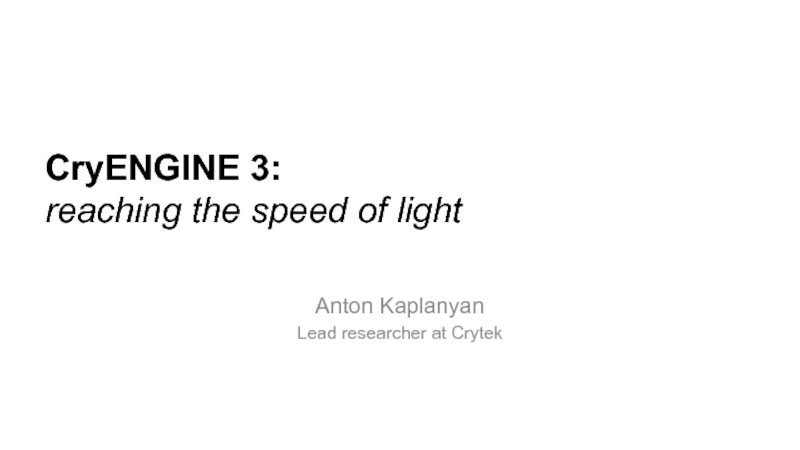
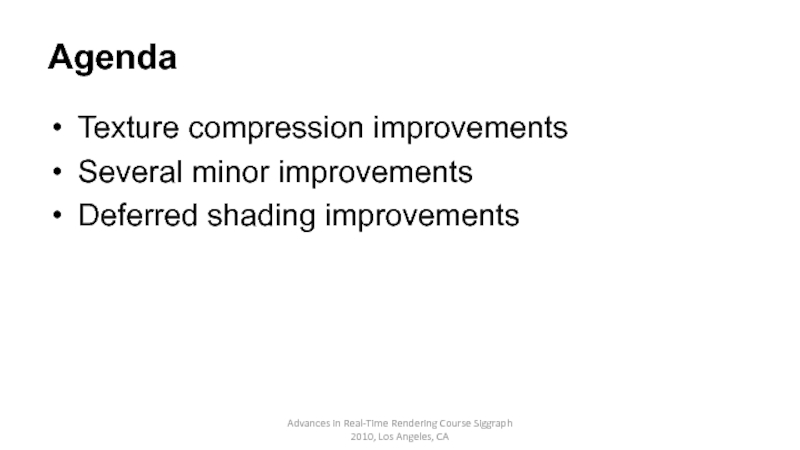
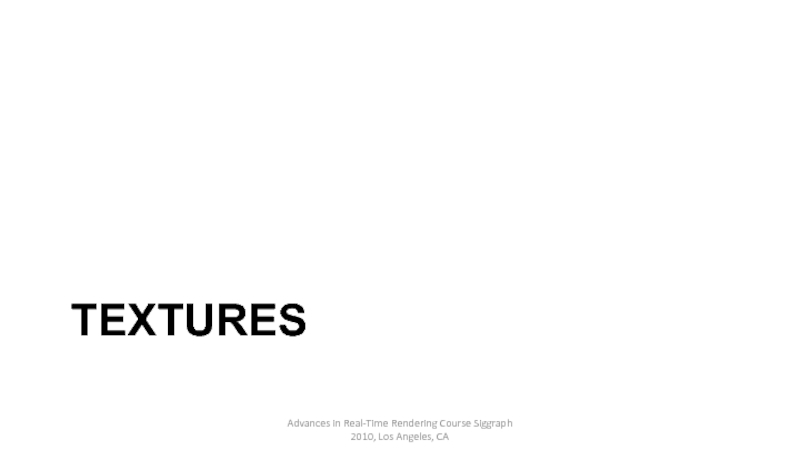
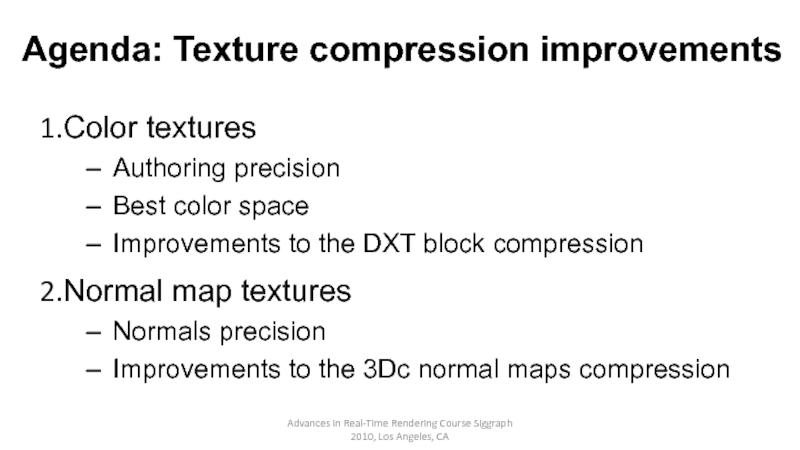

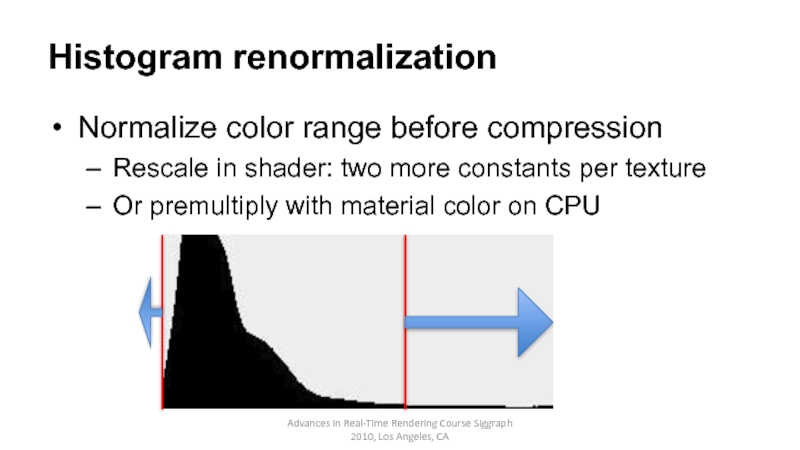
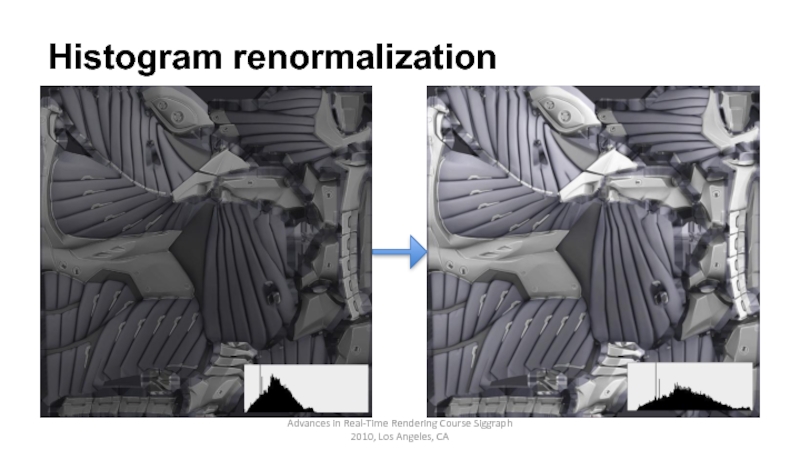
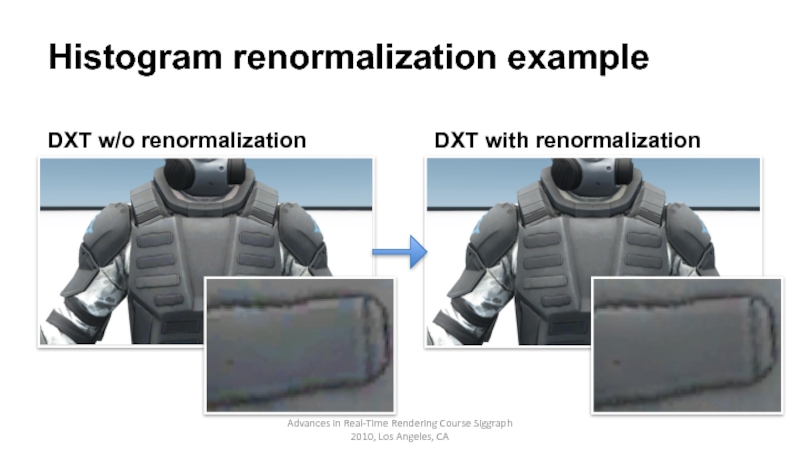
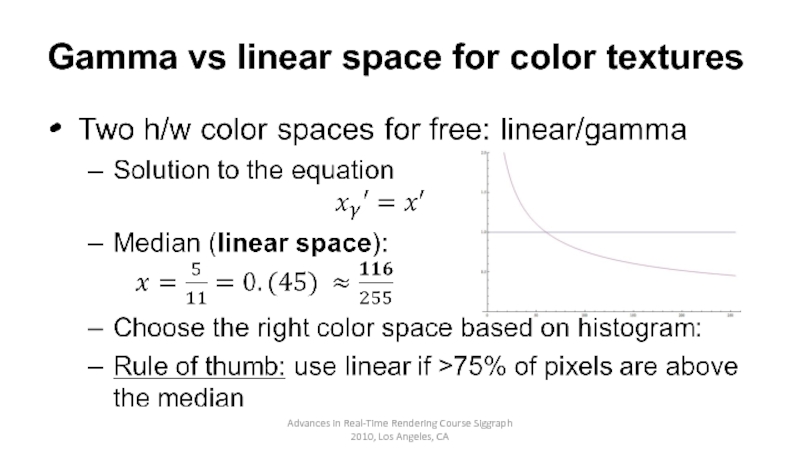
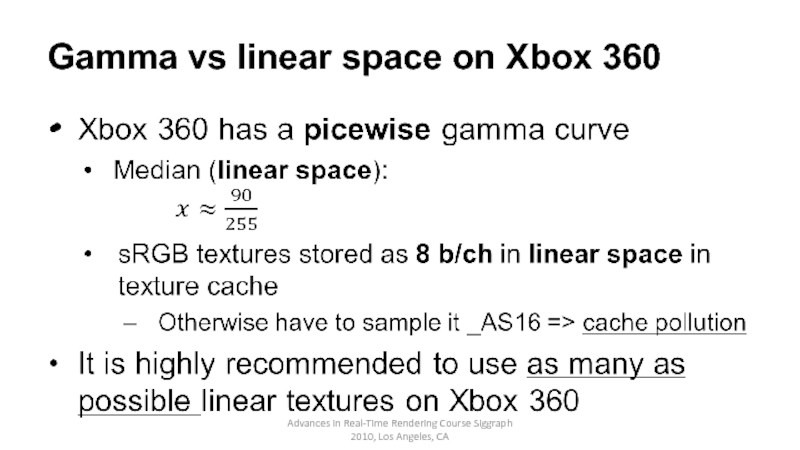
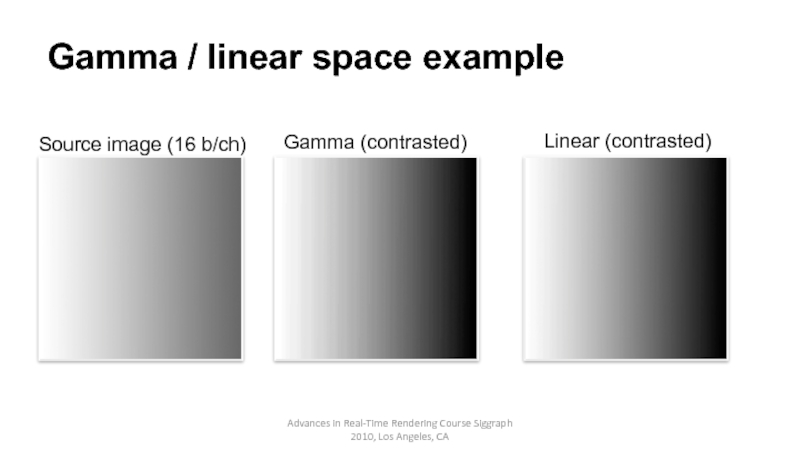
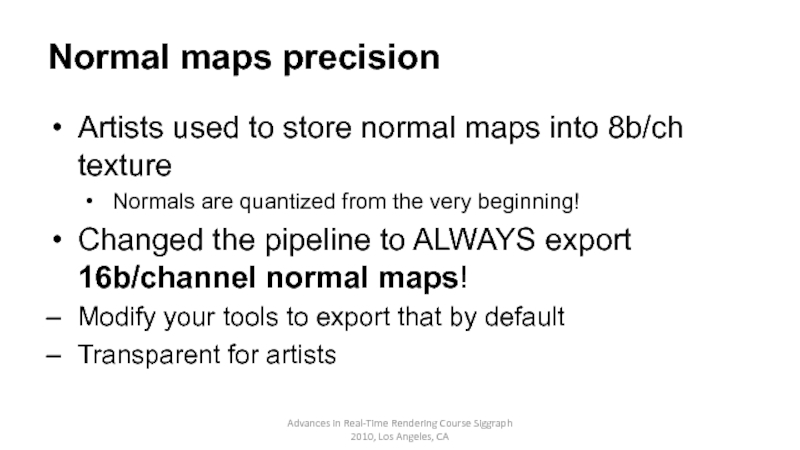

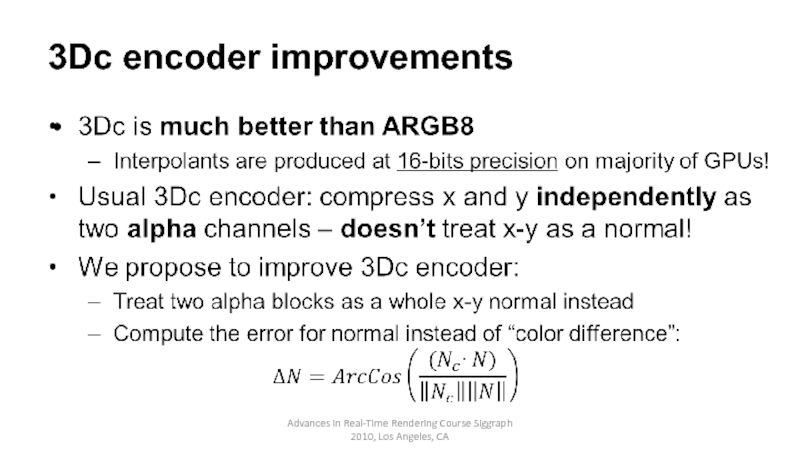
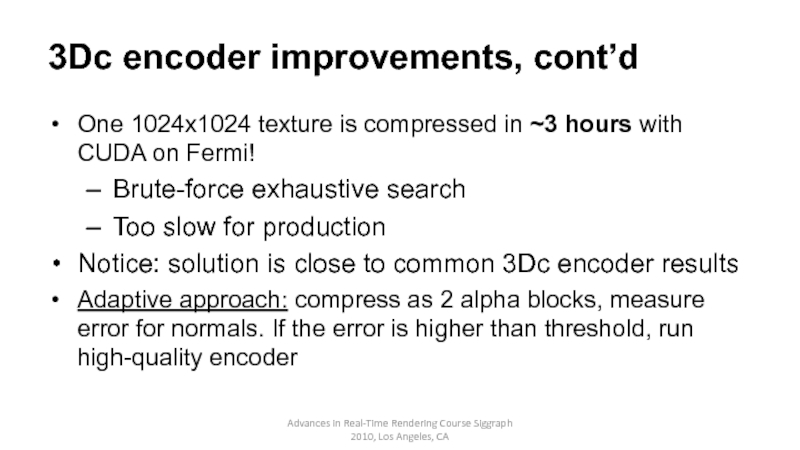
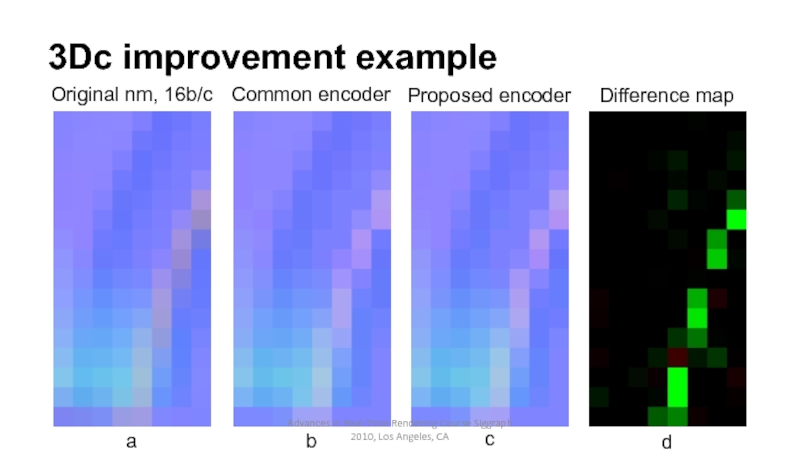
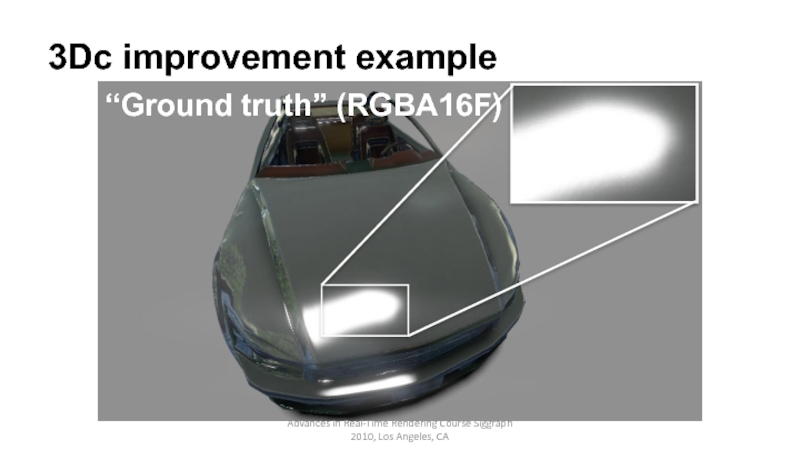
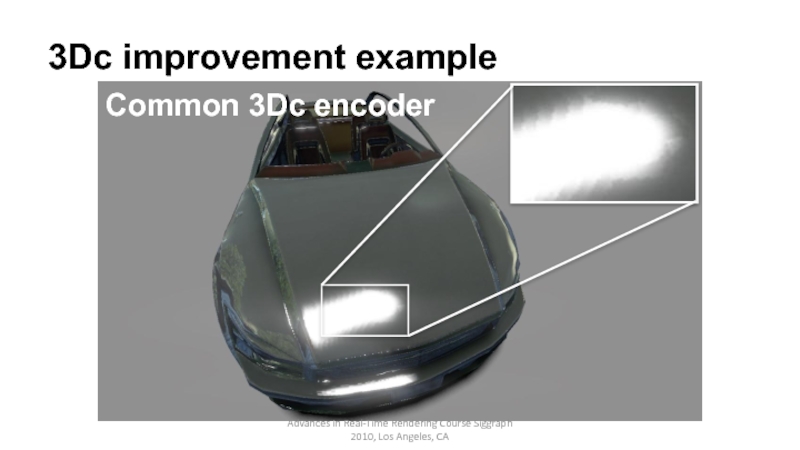
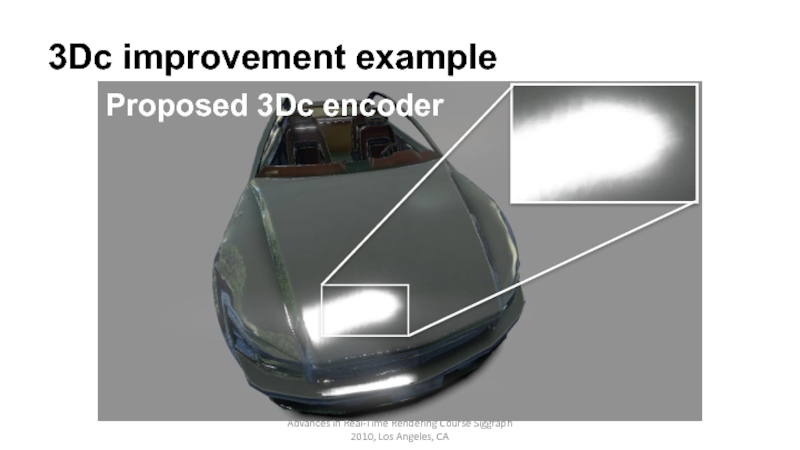

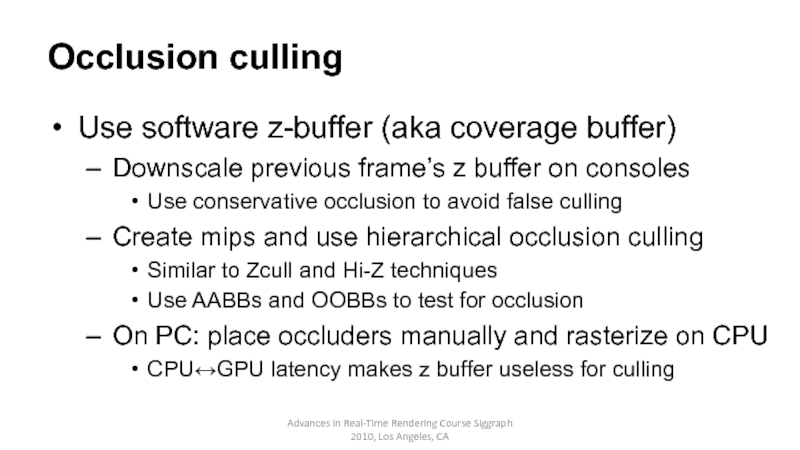
![SSAO improvementsEncode depth as 2 channel 16-bits value [0;1]Linear detph as a rational: depth=x+y/255Compute SSAO](/img/tmb/2/171929/247cae58f31334312064579b47a49bde-800x.jpg)
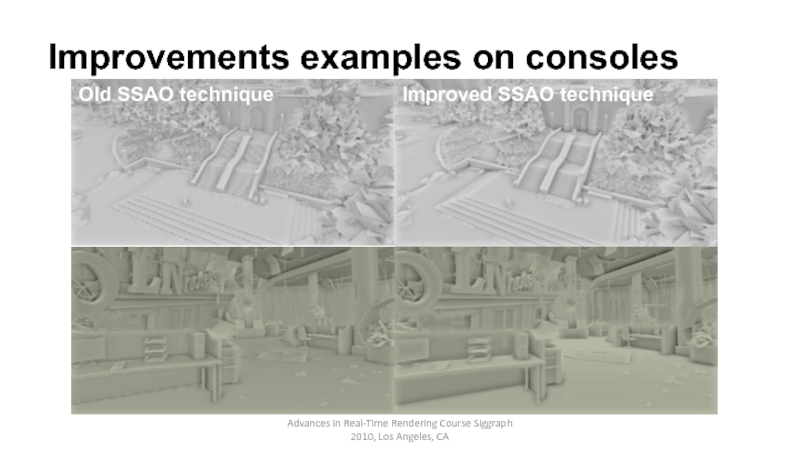
![Color gradingBake all global color transformations into 3D LUT [SELAN07] 16x16x16 LUT proved to be](/img/tmb/2/171929/e6e2a9e6f6ee4fed617df43e5ae1fa10-800x.jpg)
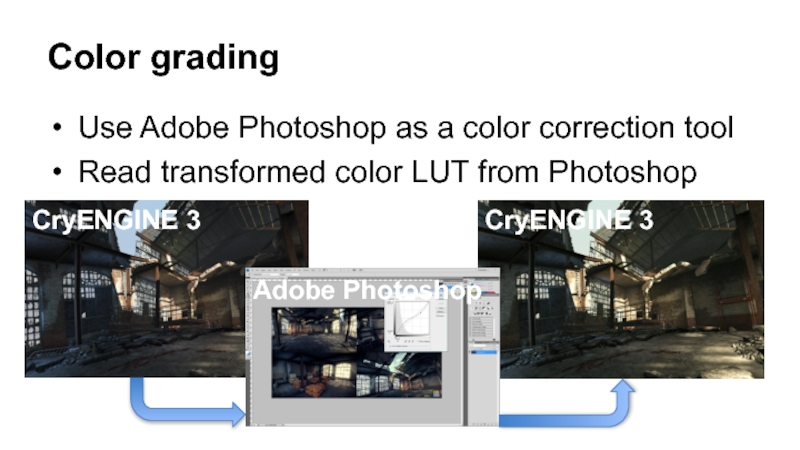
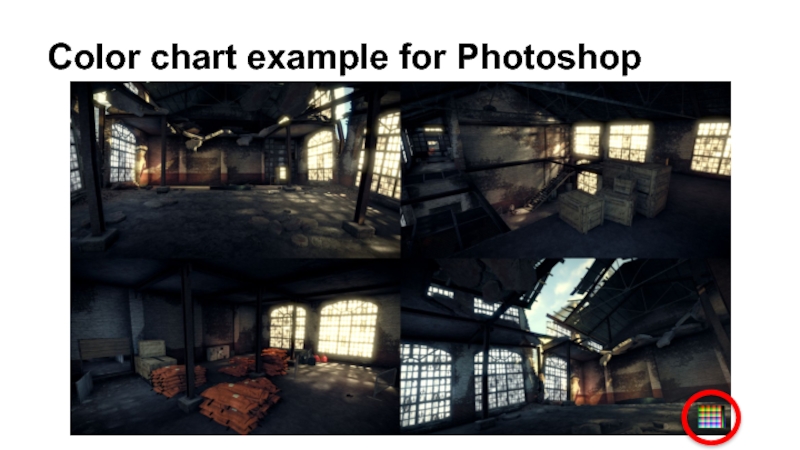
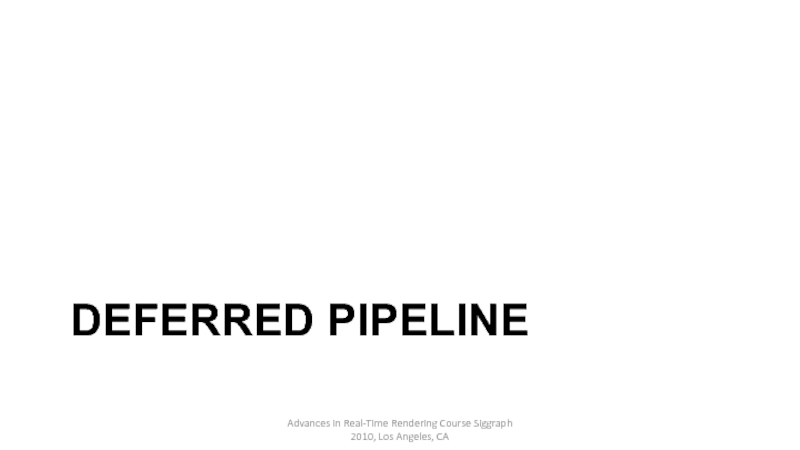
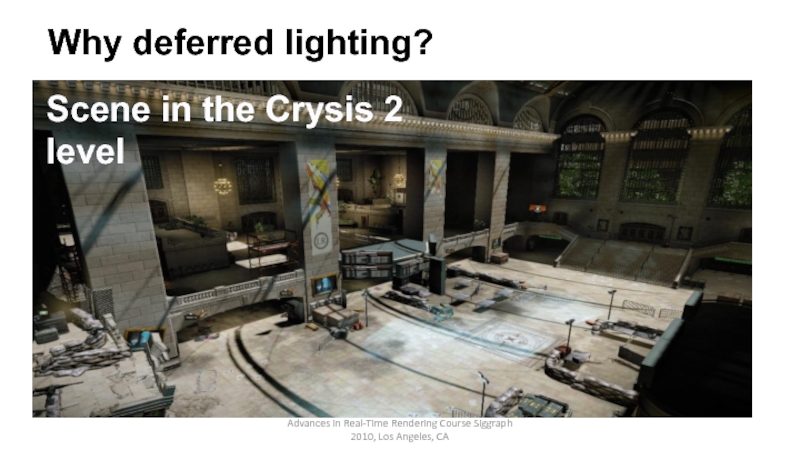
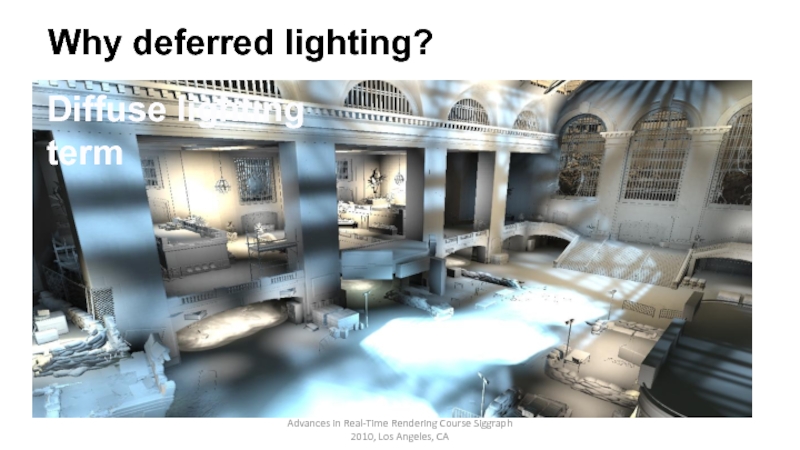
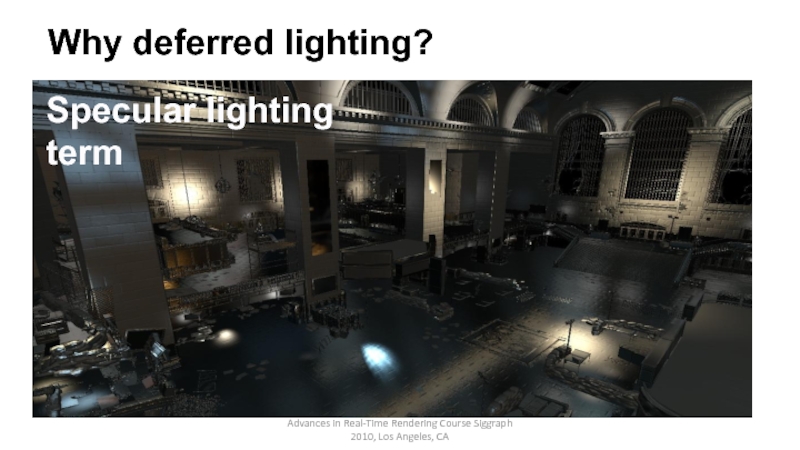
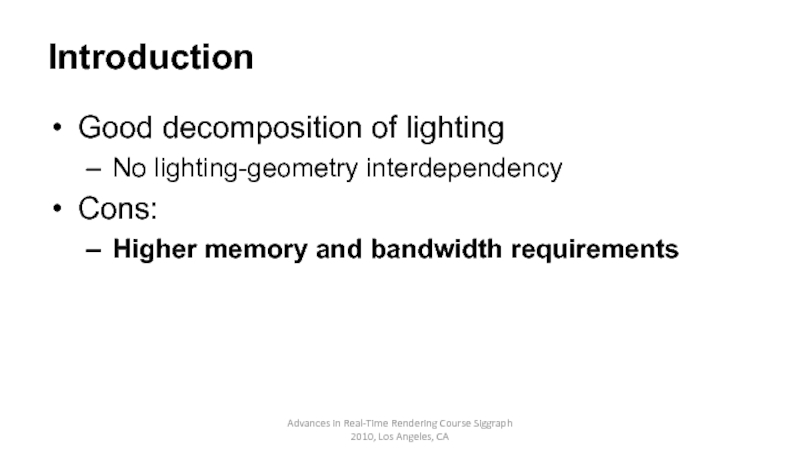
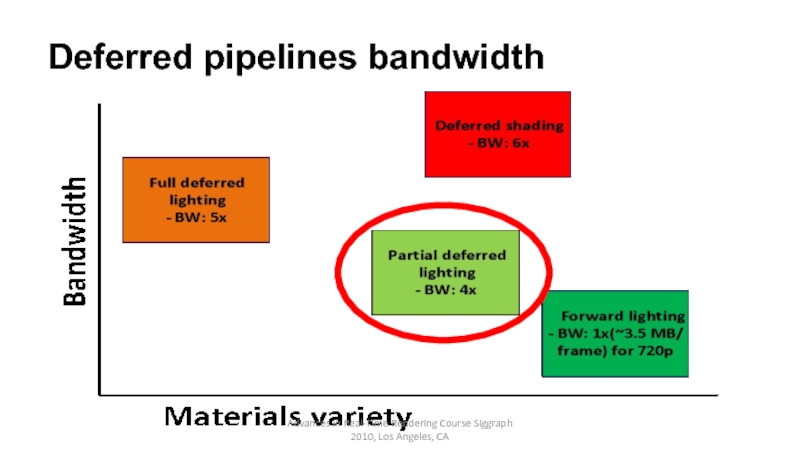
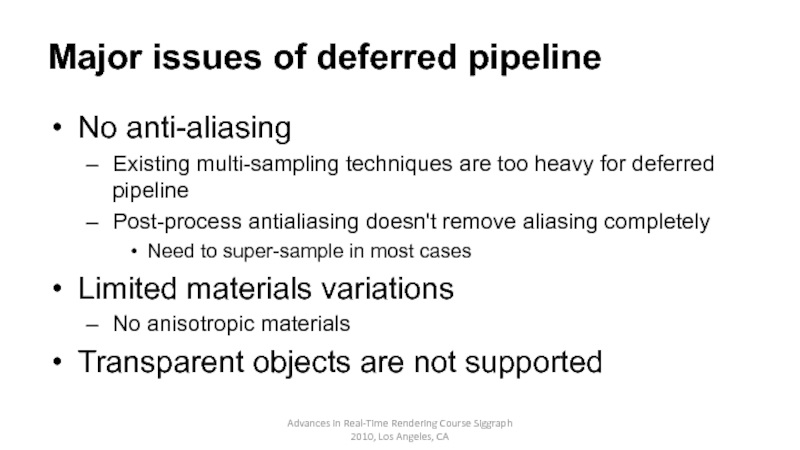
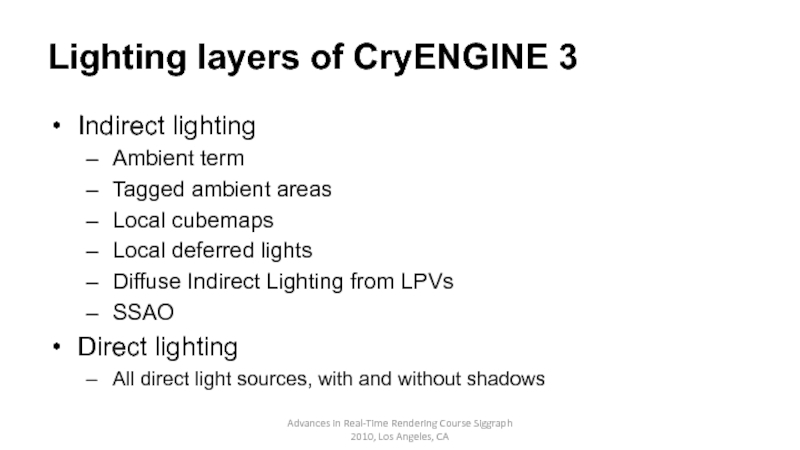
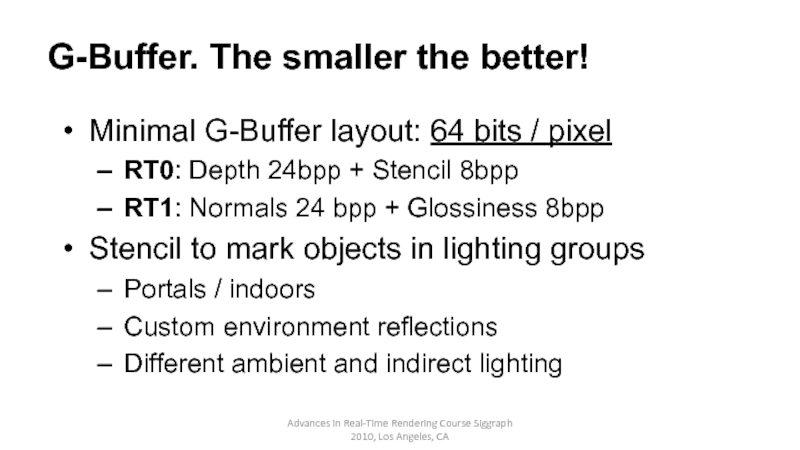
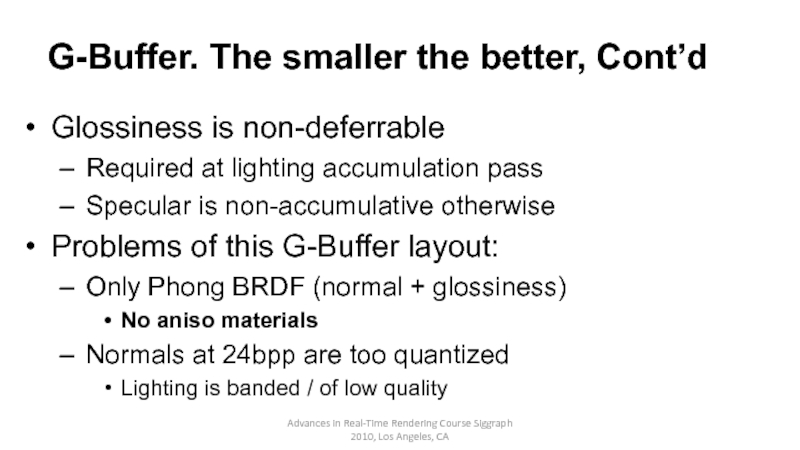
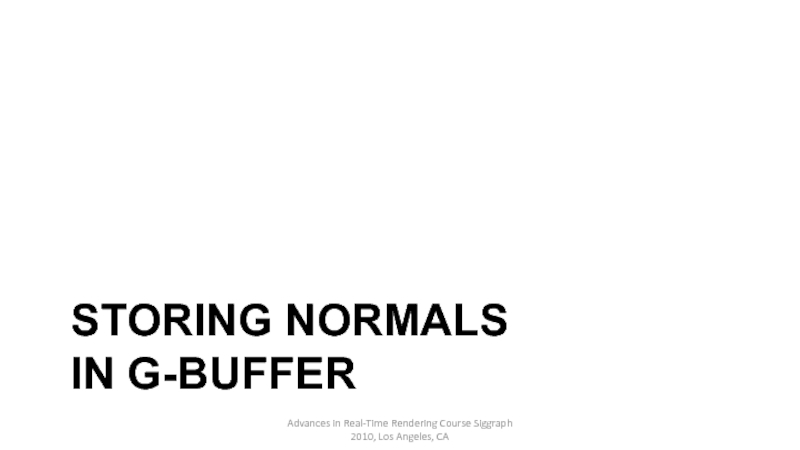
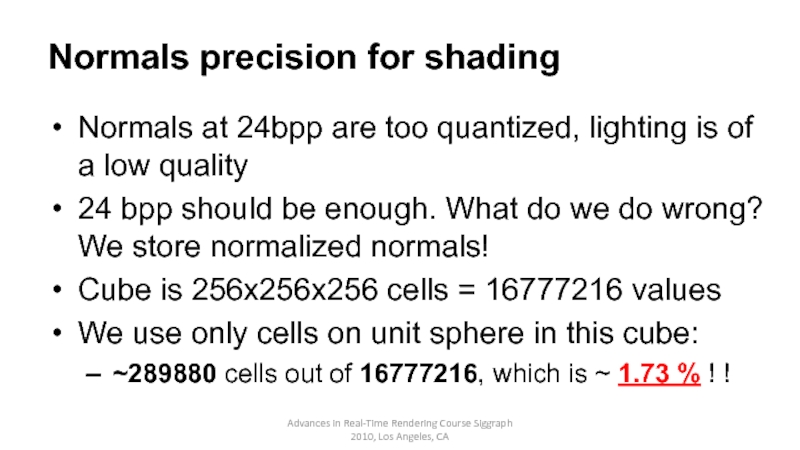
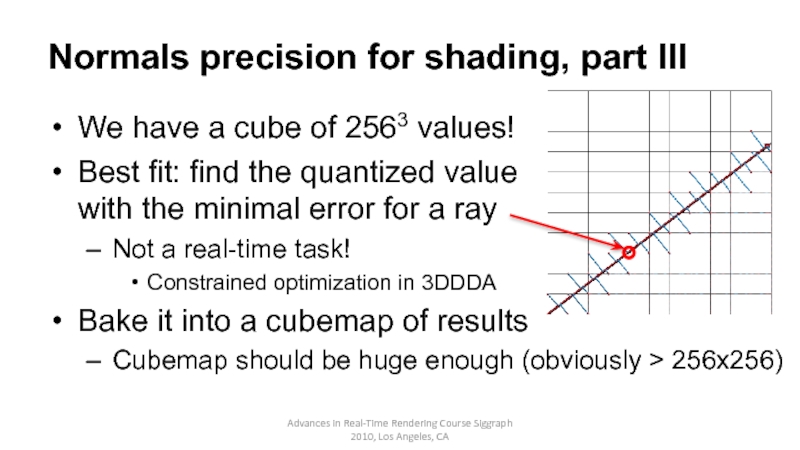
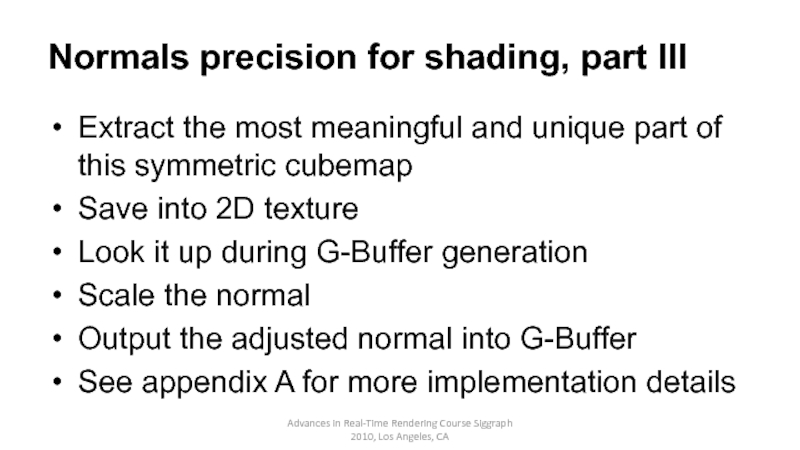
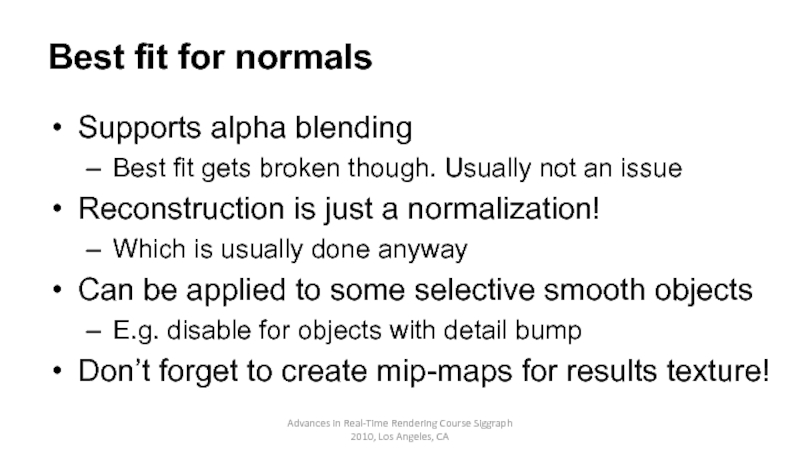
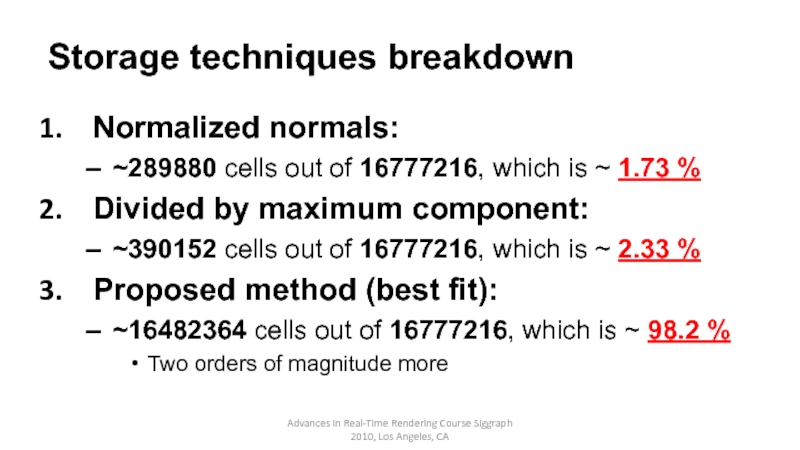
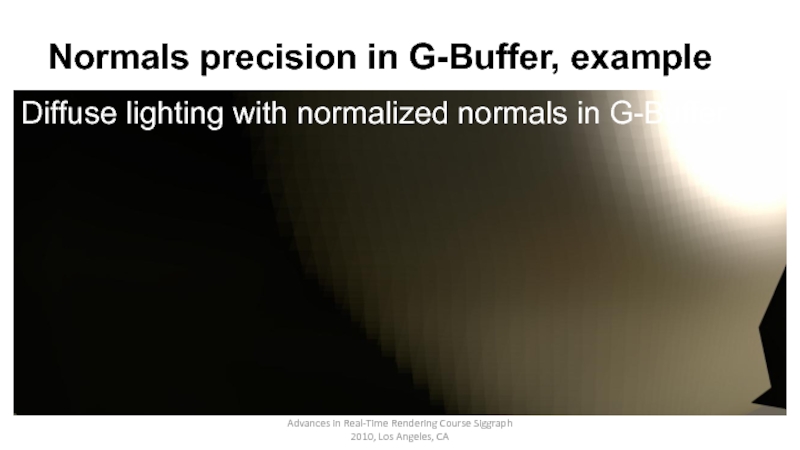
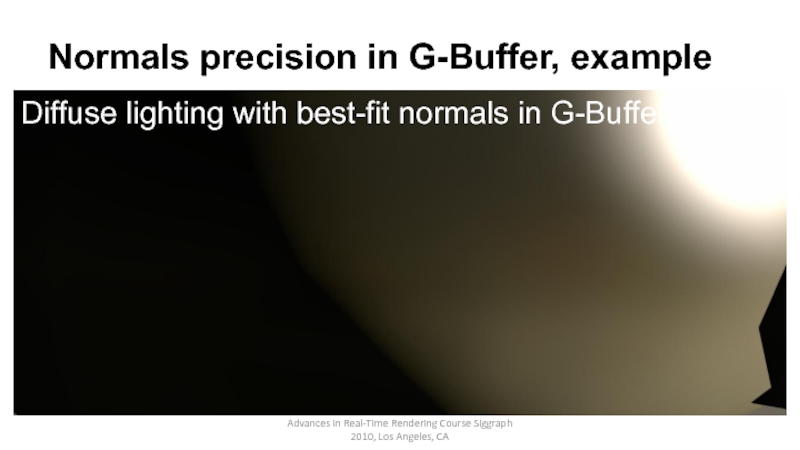
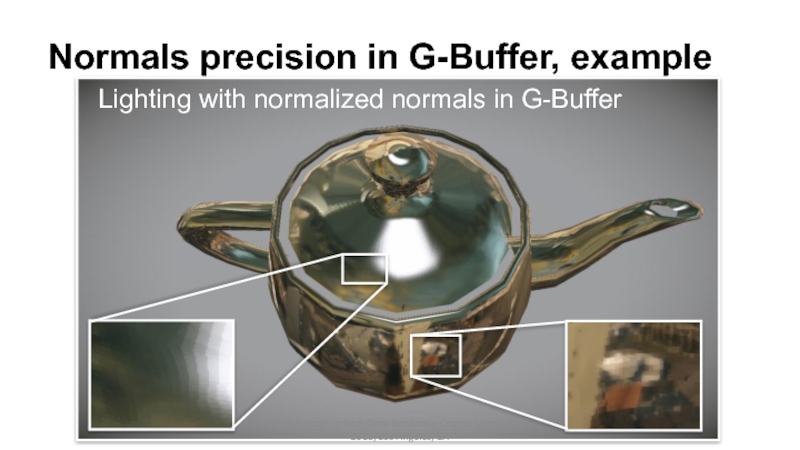
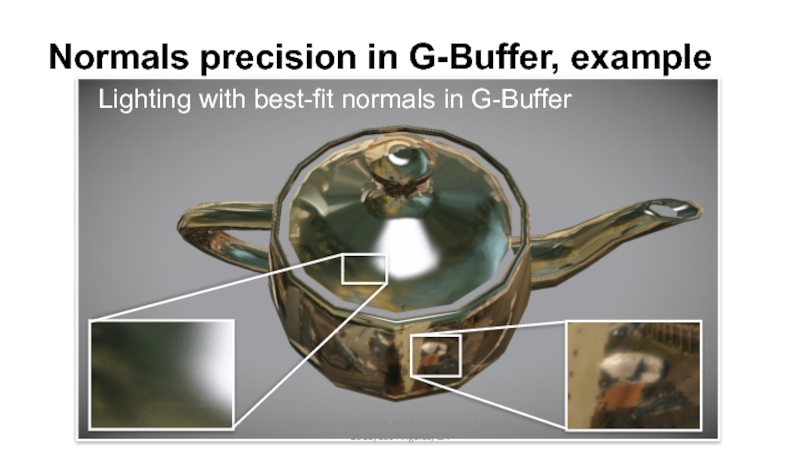
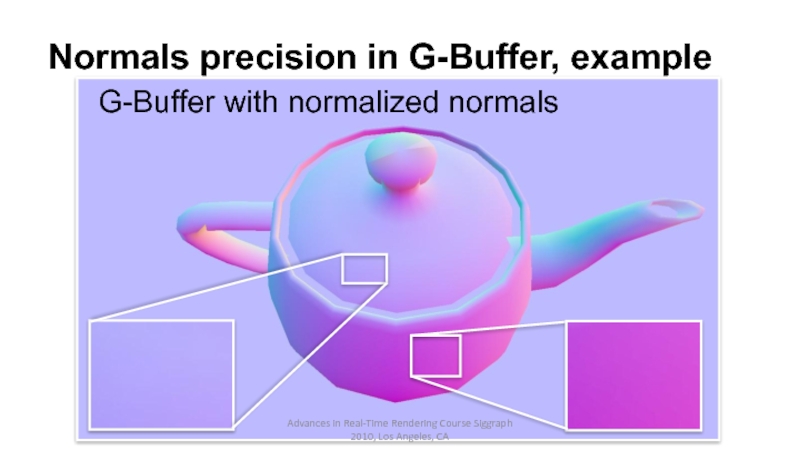
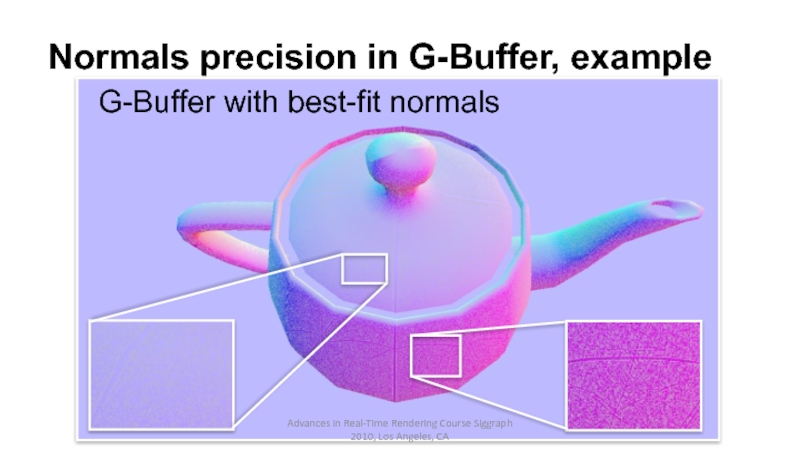
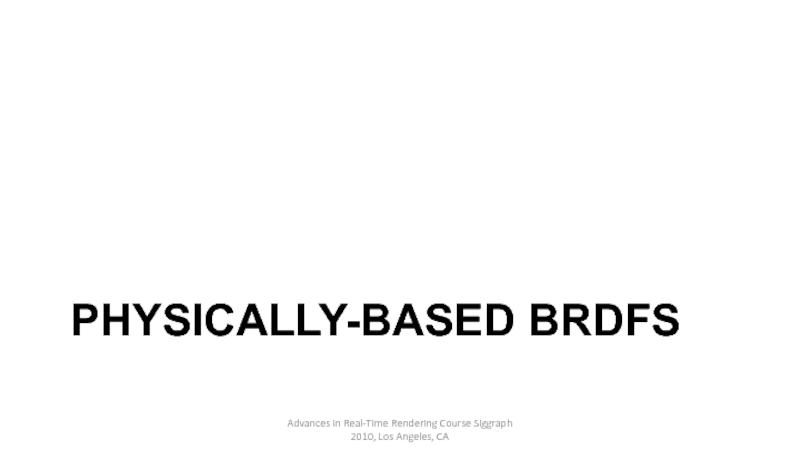
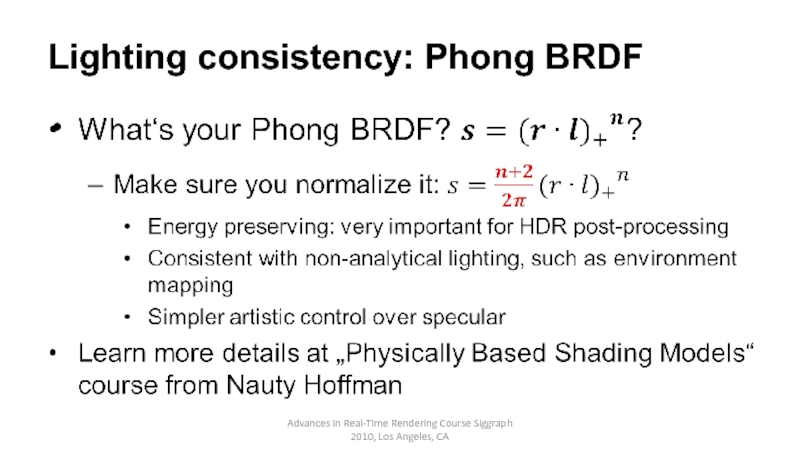
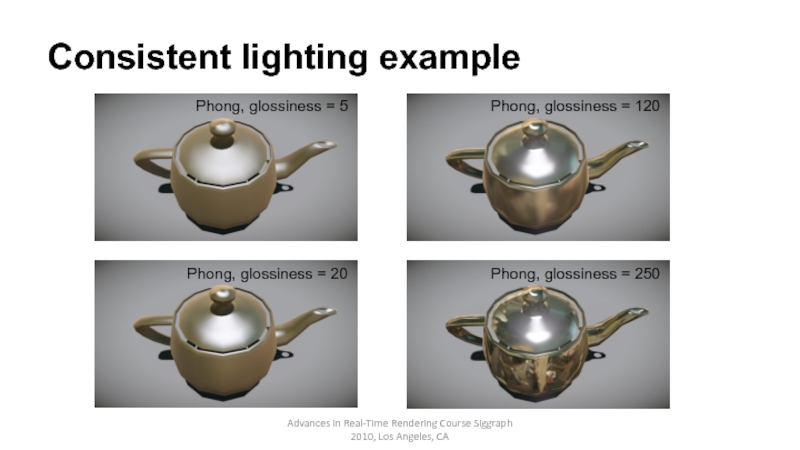
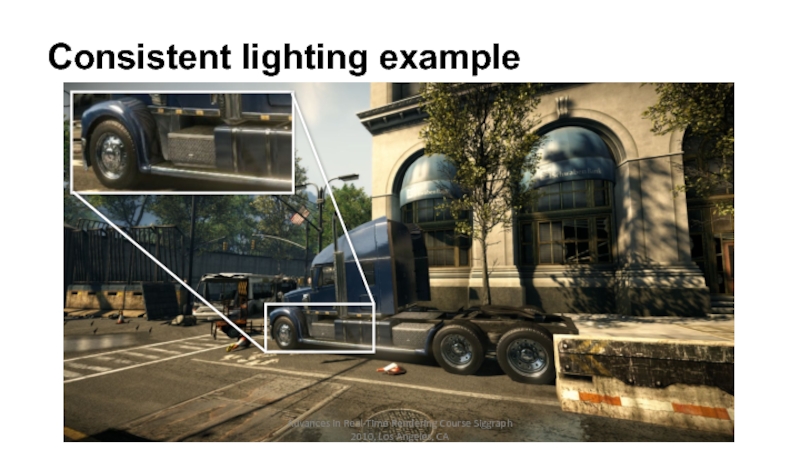
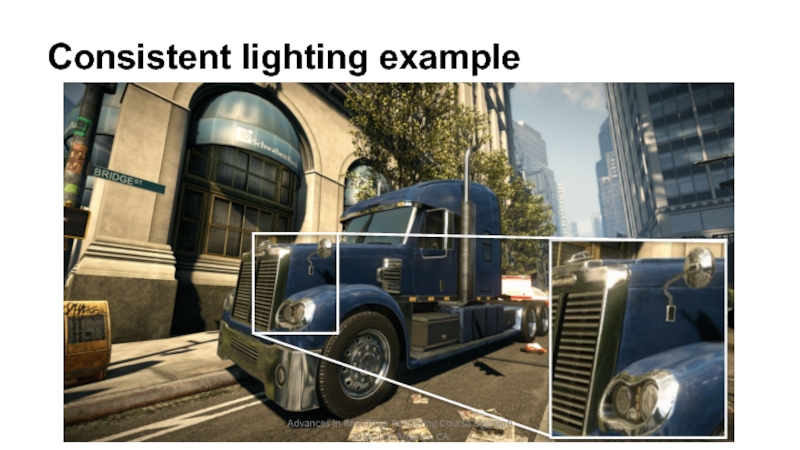
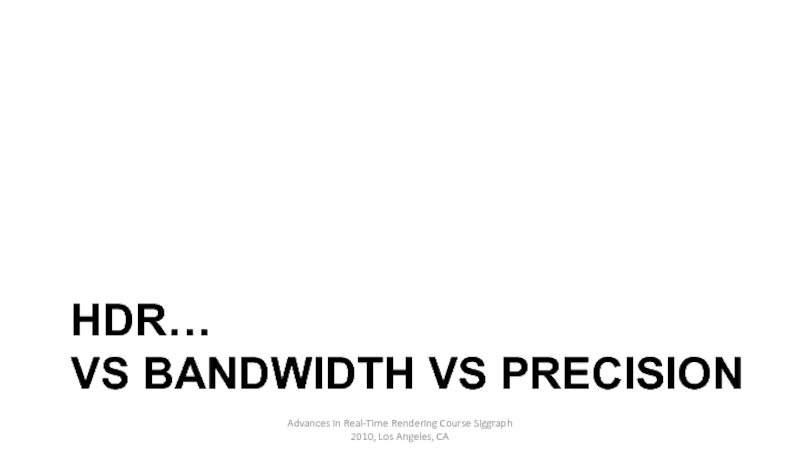
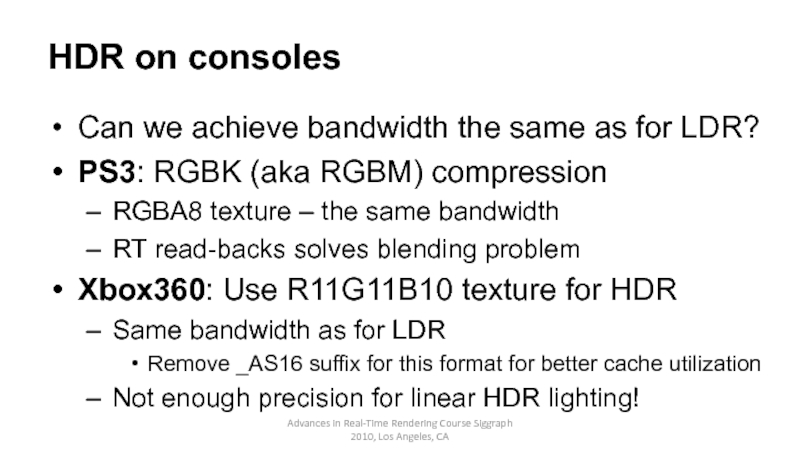
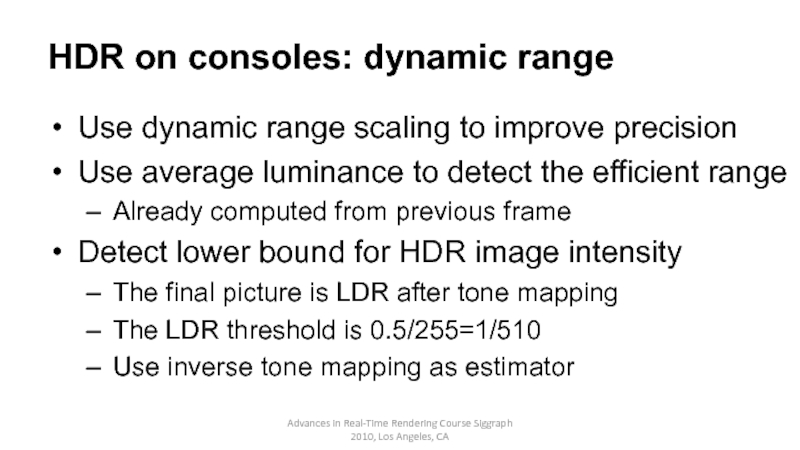
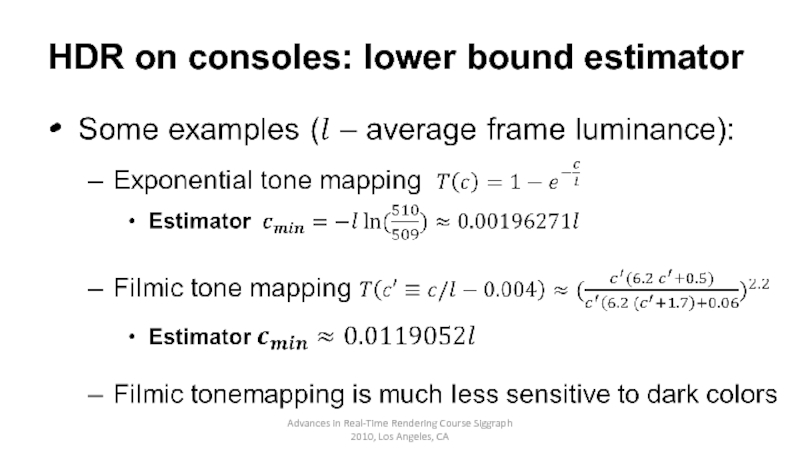
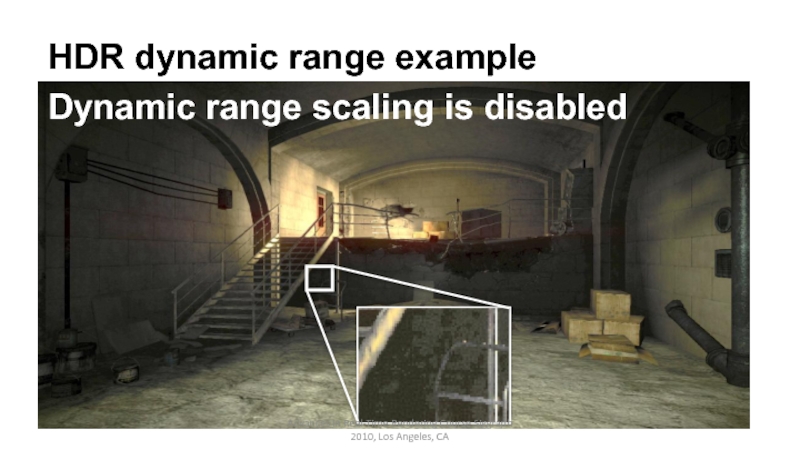
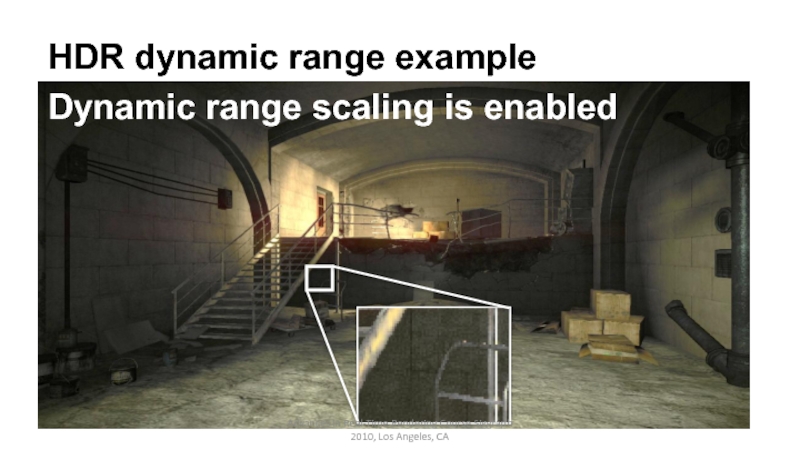
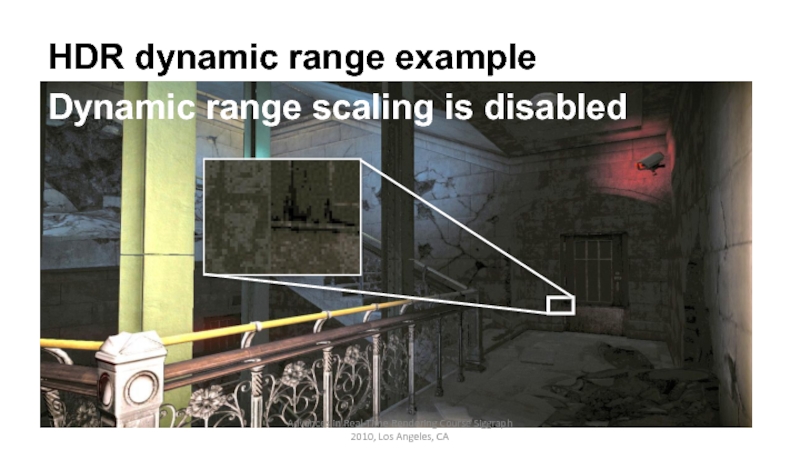
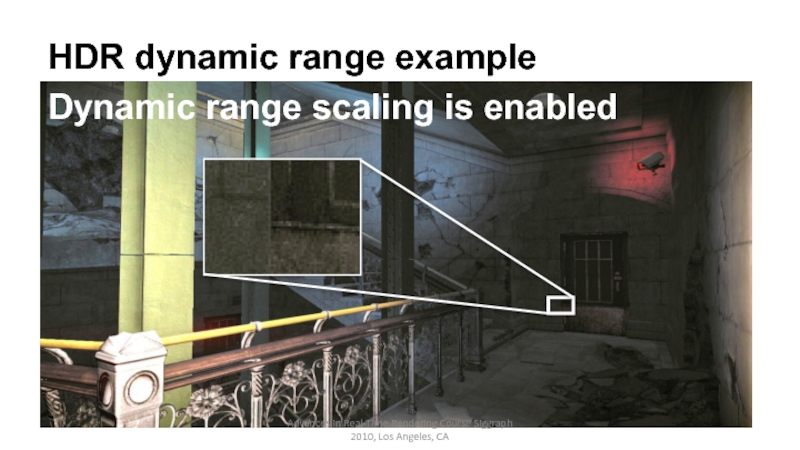
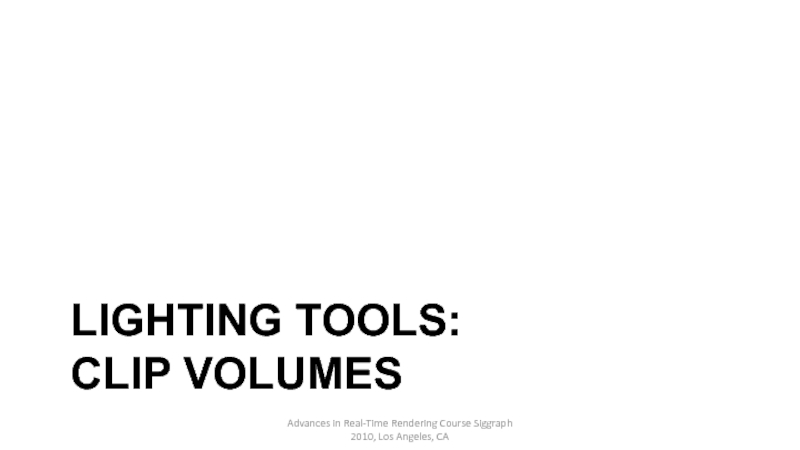
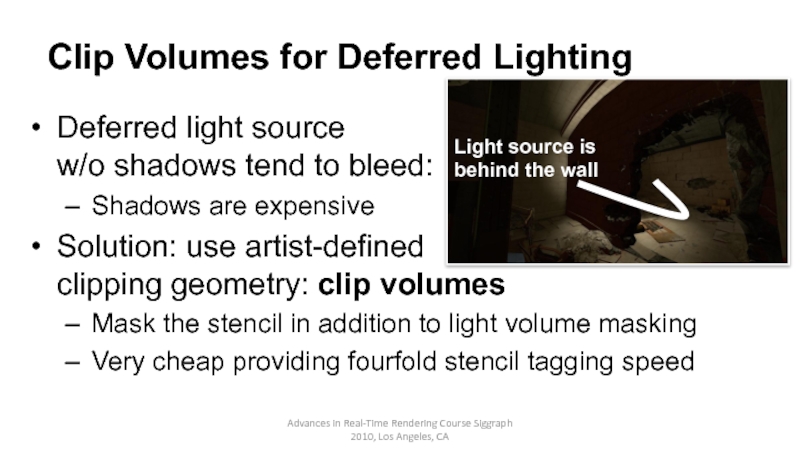
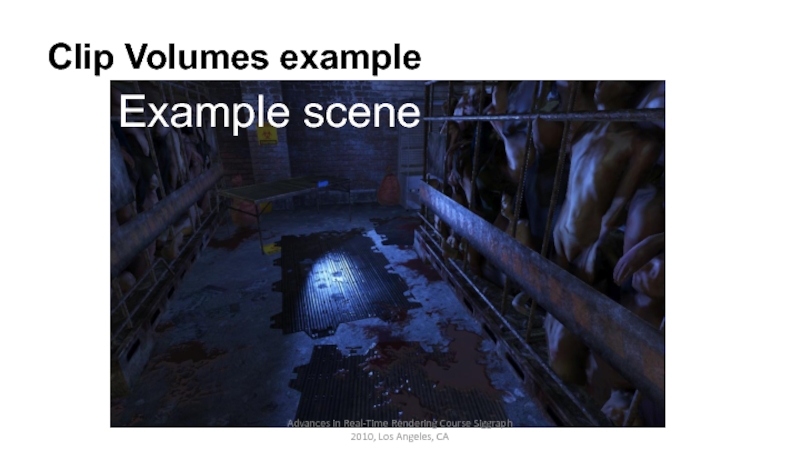
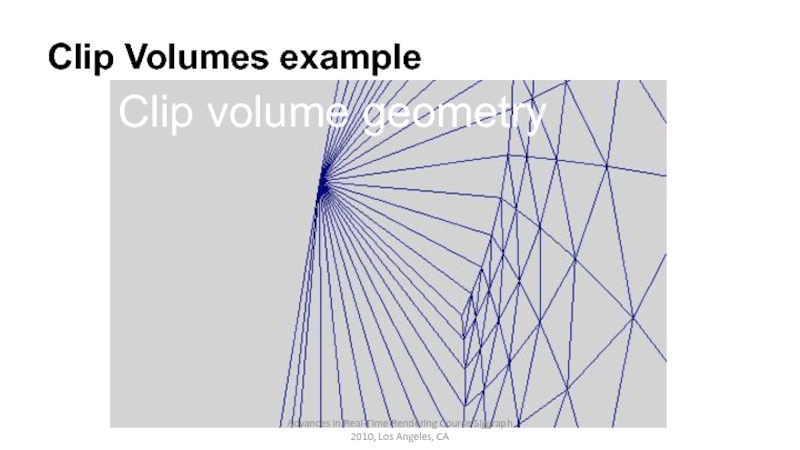
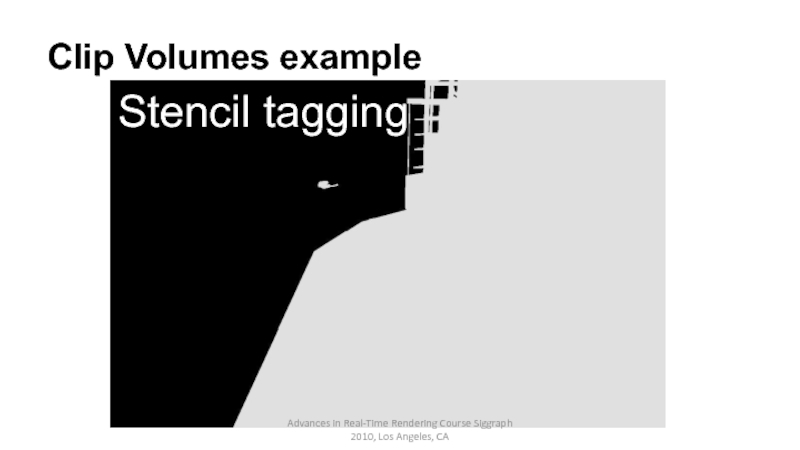
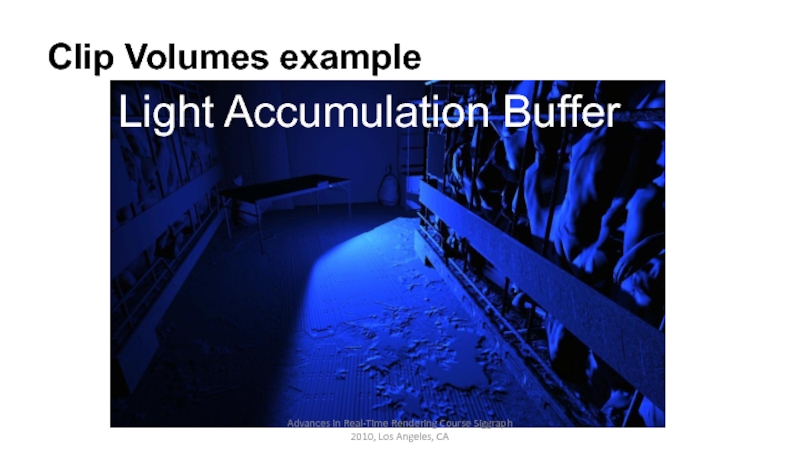
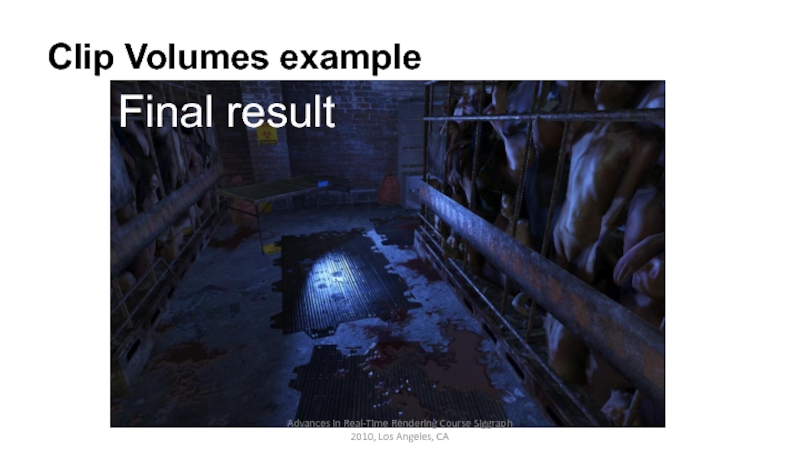
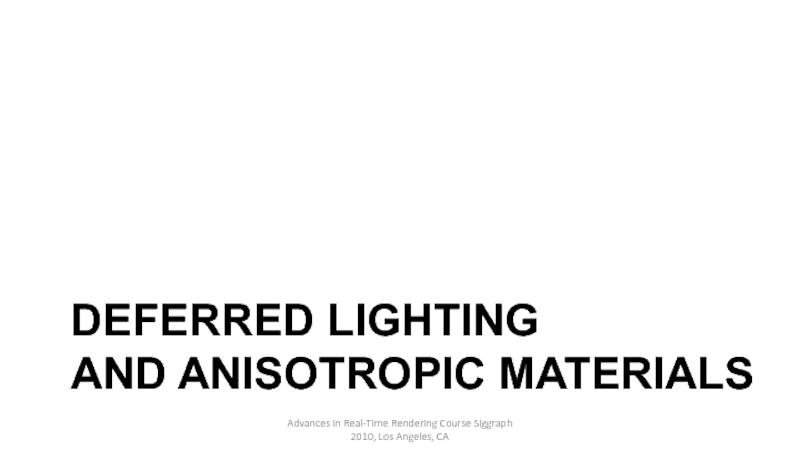
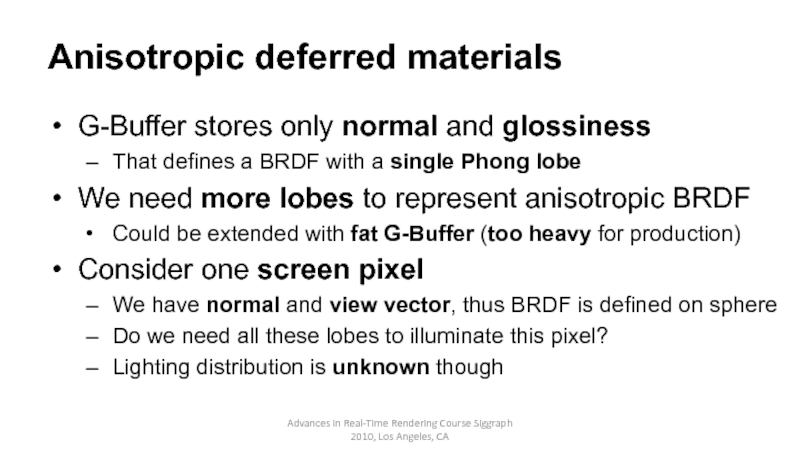
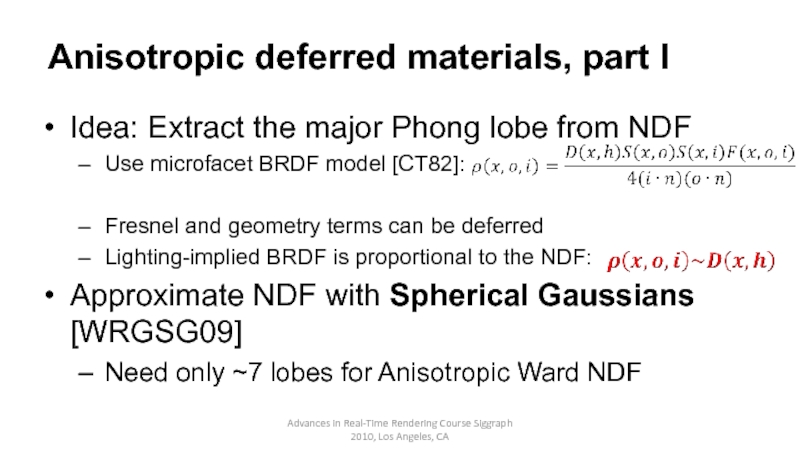
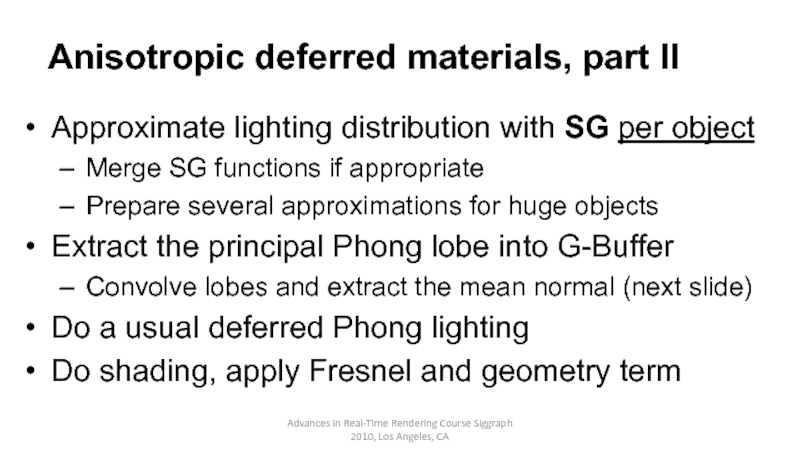

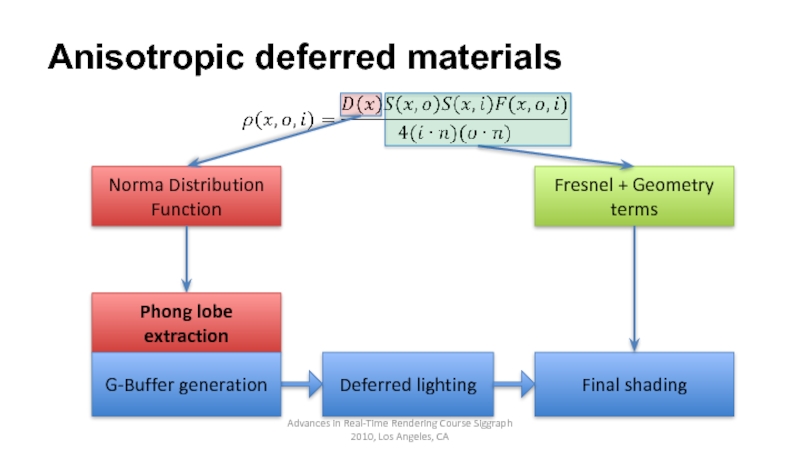

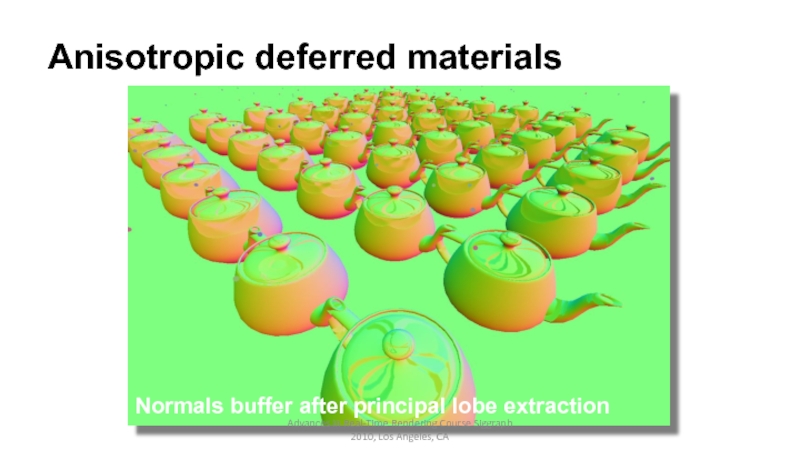
![Anisotropic deferred materials: why?Cons:Imprecise lobe extraction and specular reflectionsBut: see [RTDKS10] for more details about](/img/tmb/2/171929/5dcee8443e82136bb620d00f46a365cf-800x.jpg)
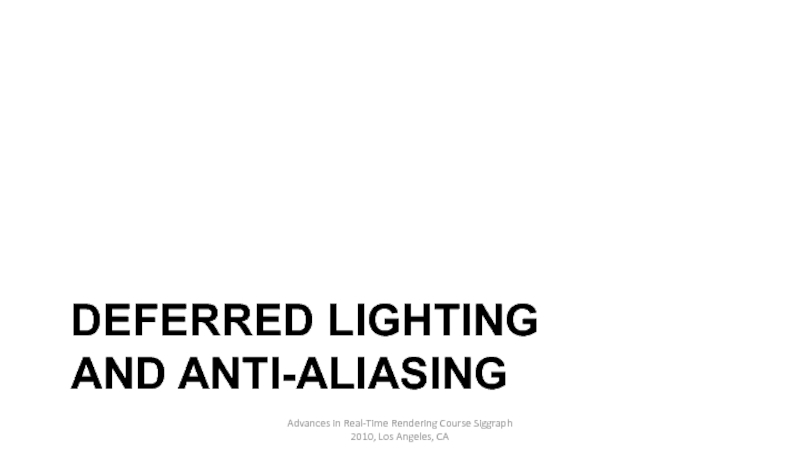
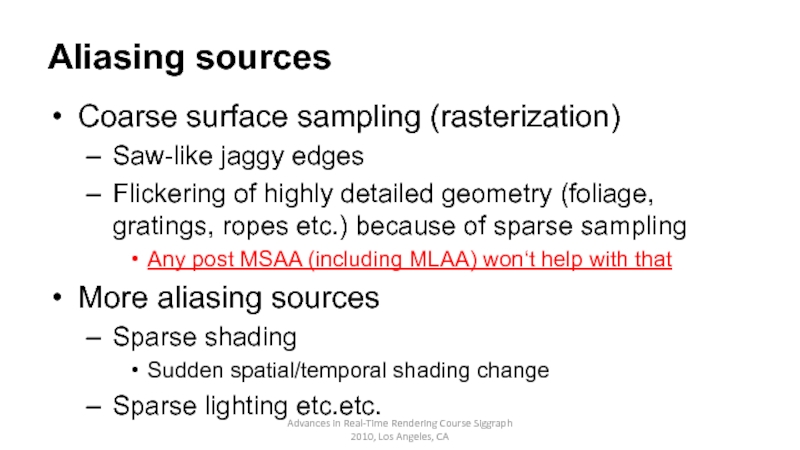
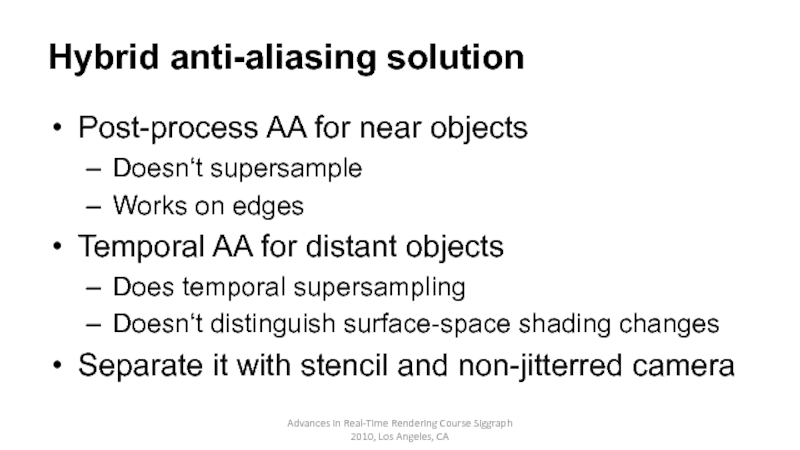
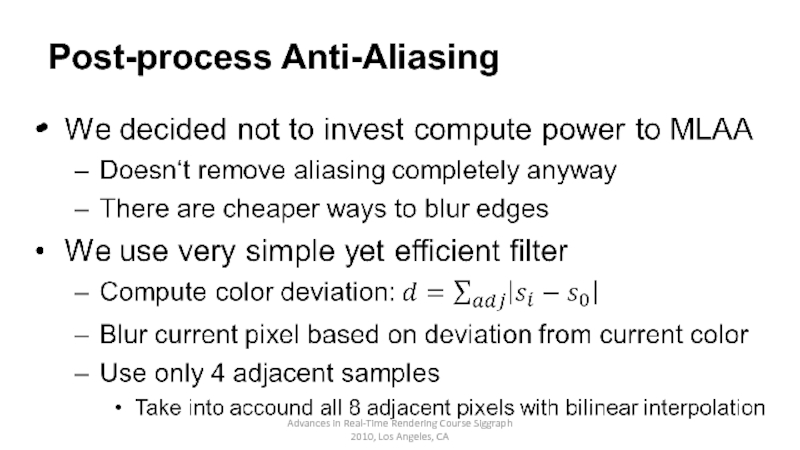
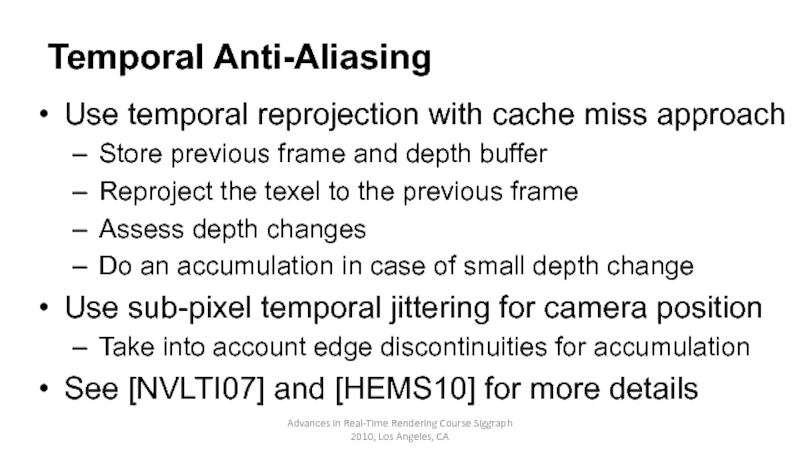
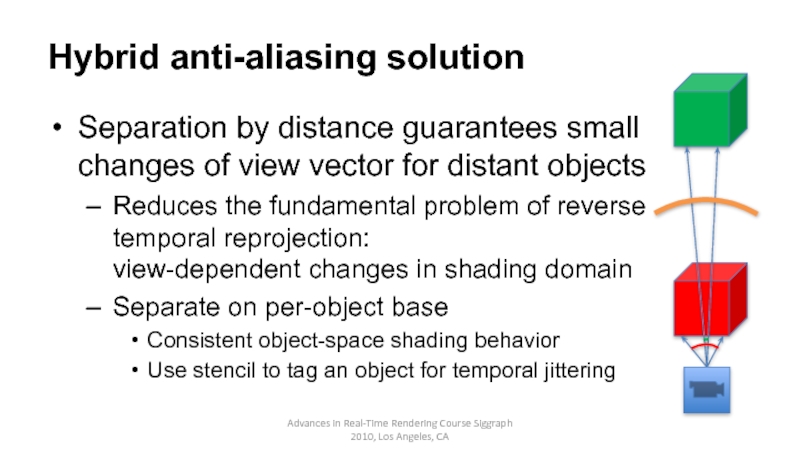
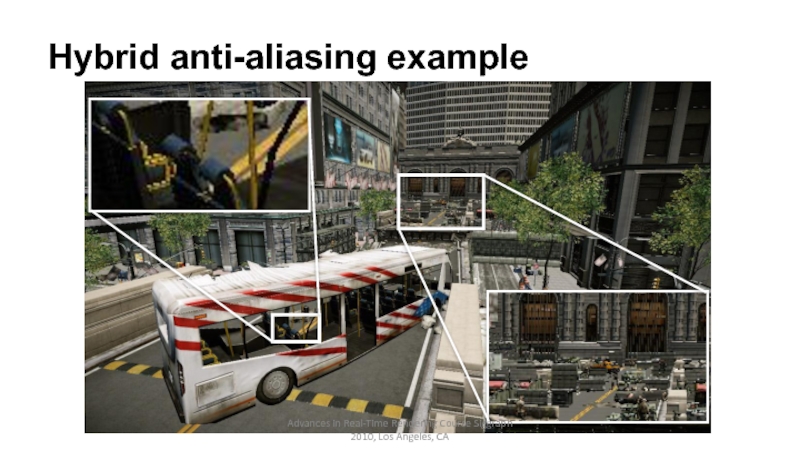
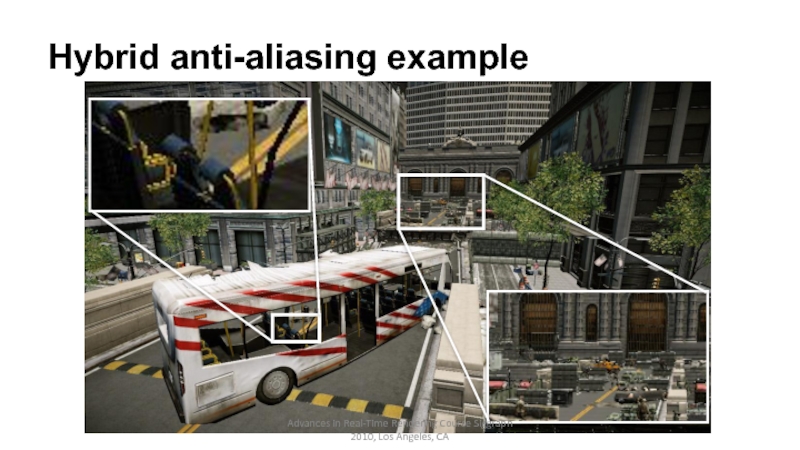
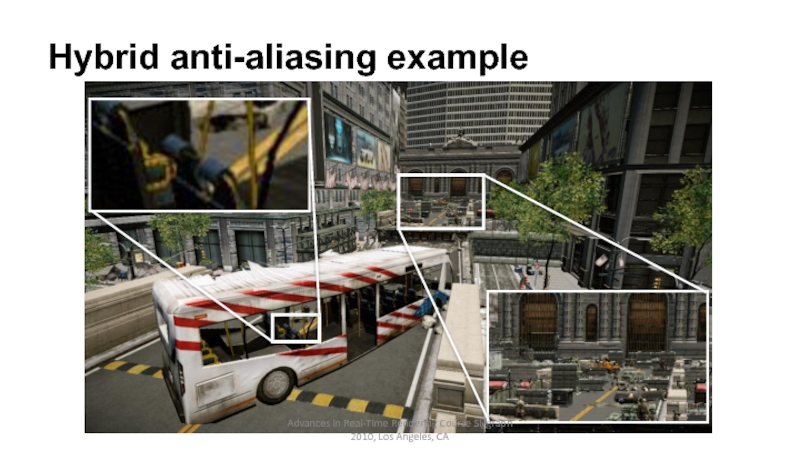
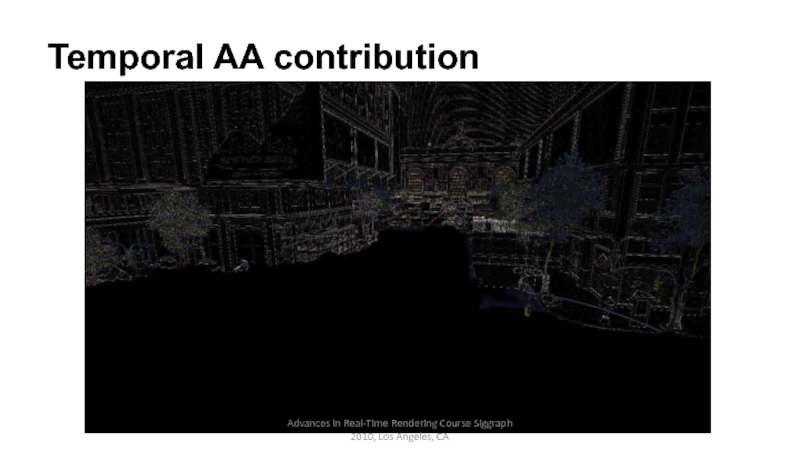
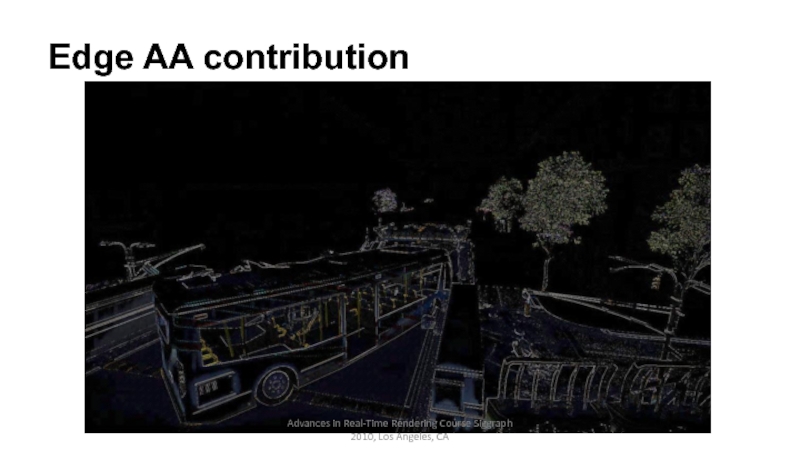
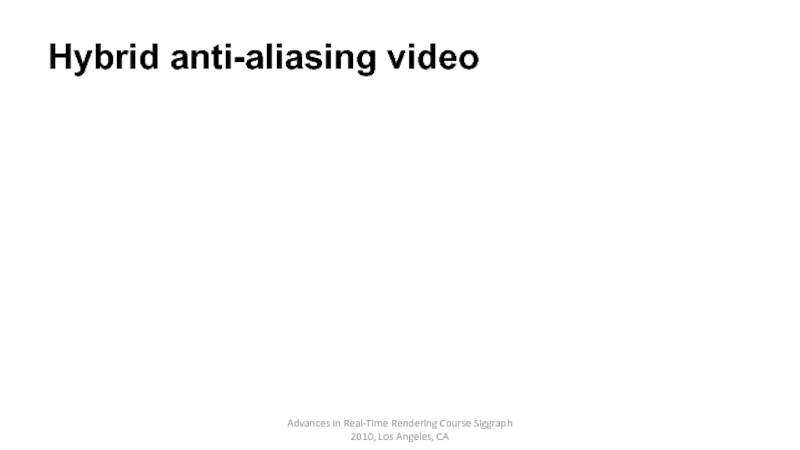
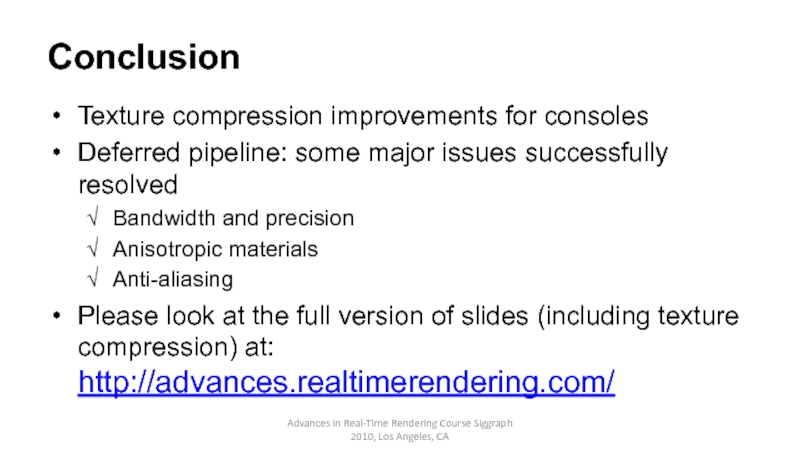
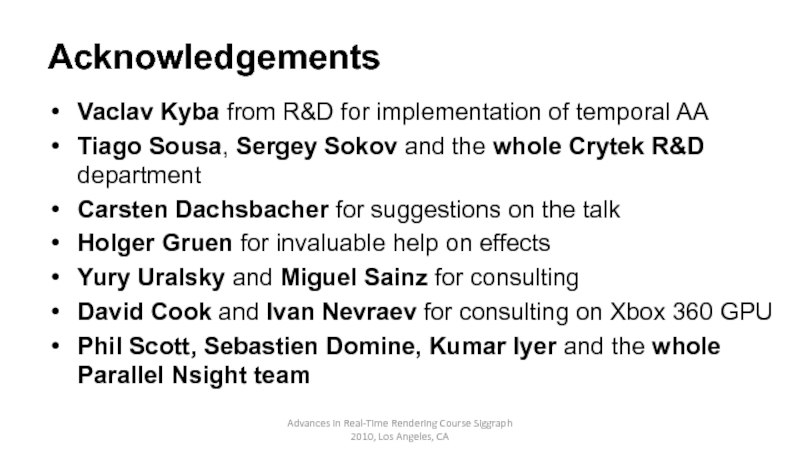
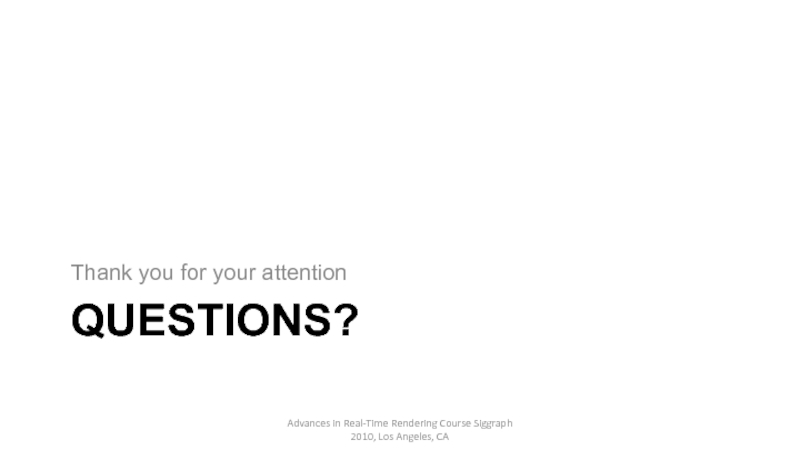

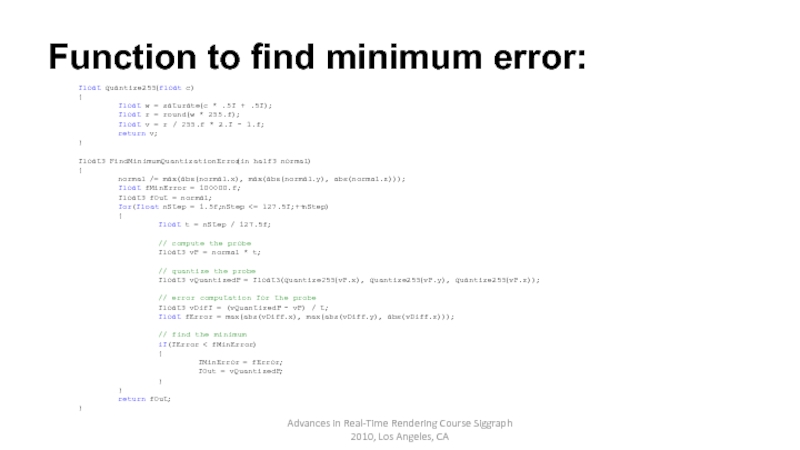
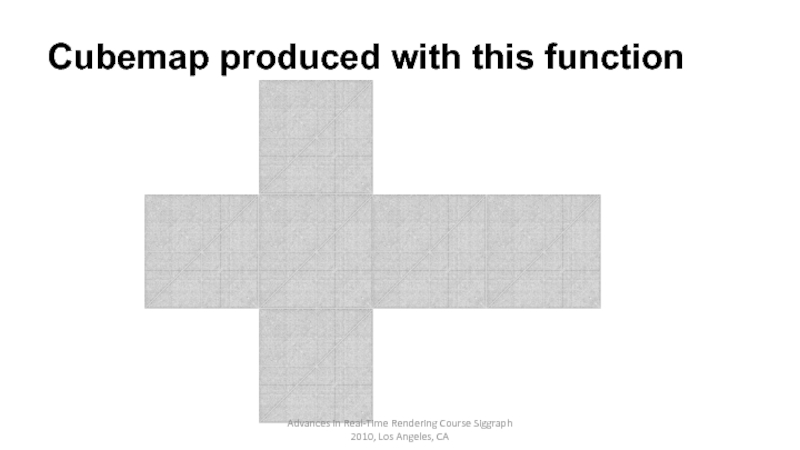
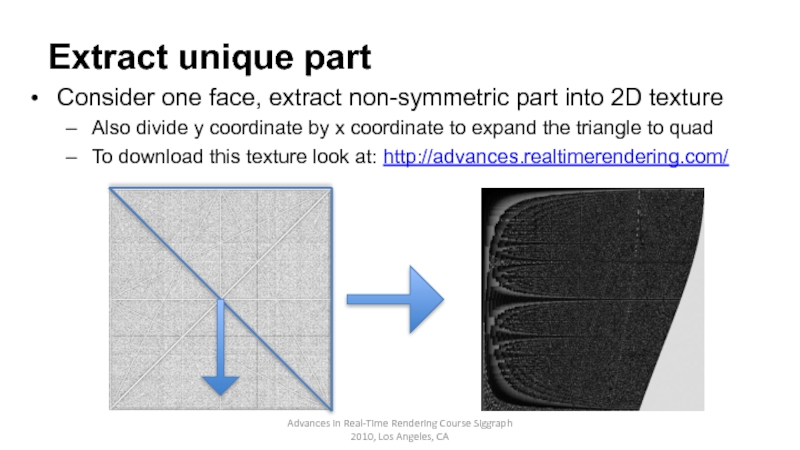
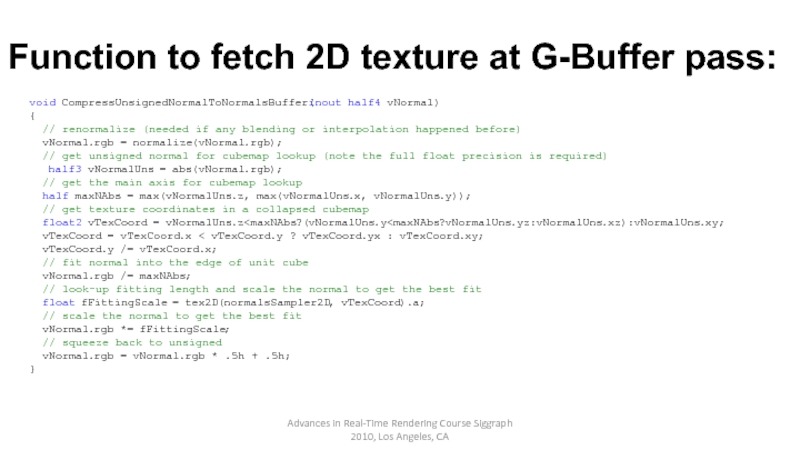
![References[CT81] Cook, R. L., and Torrance, K. E. 1981. “A reflectance model for computer graphics”,](/img/tmb/2/171929/50e582206f79eeb679a754ac4bd9acd6-800x.jpg)
